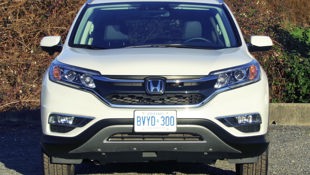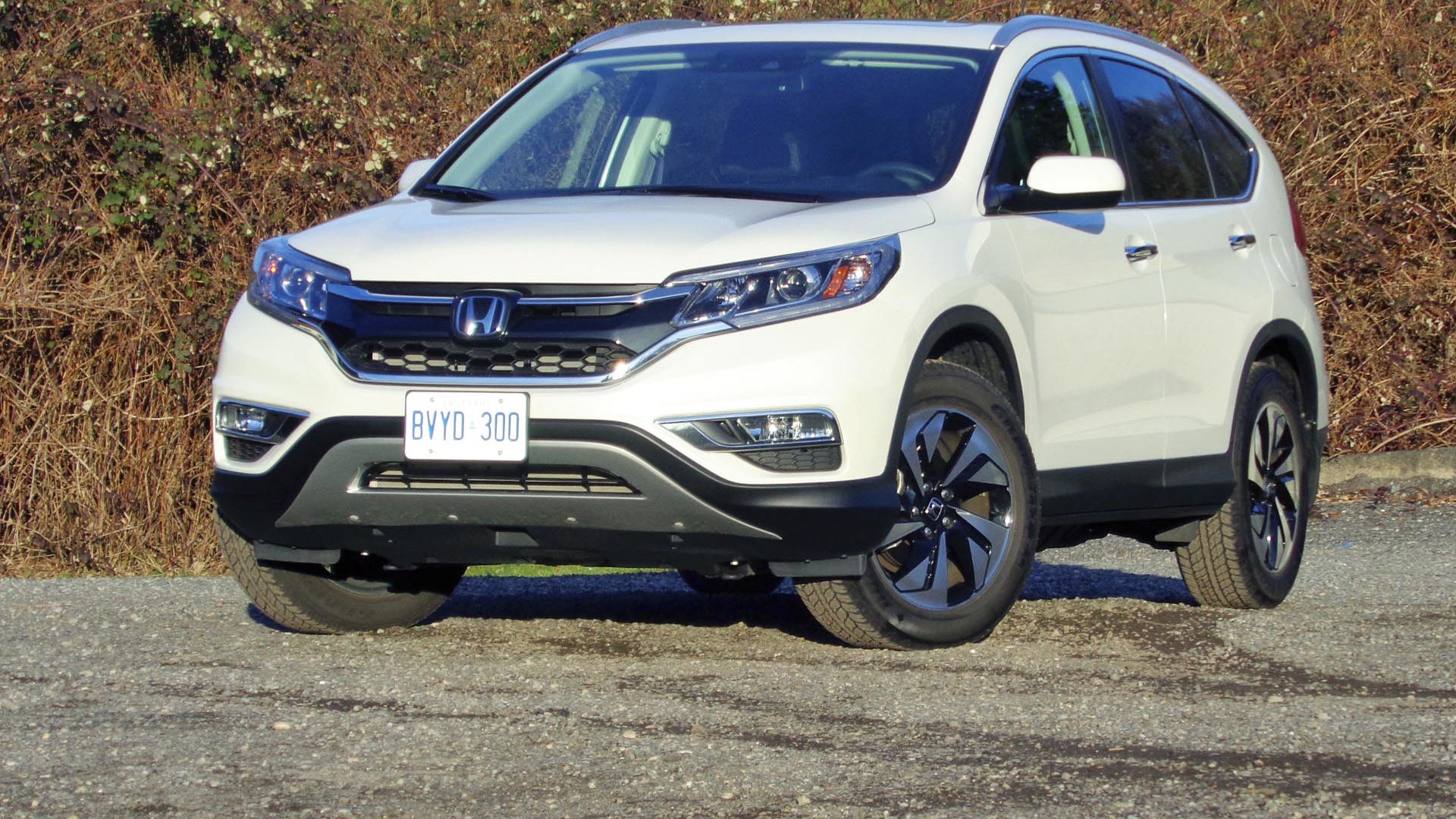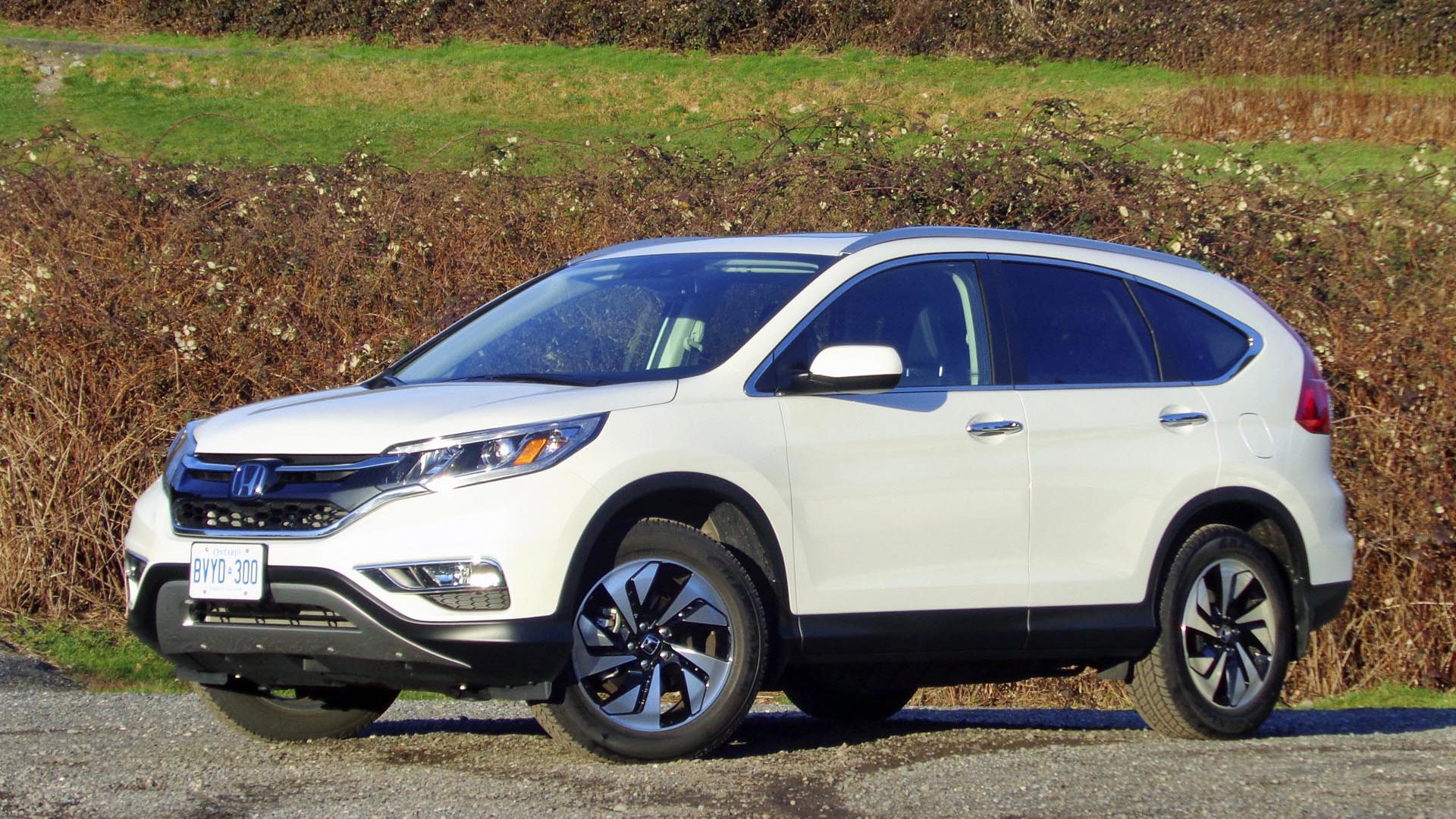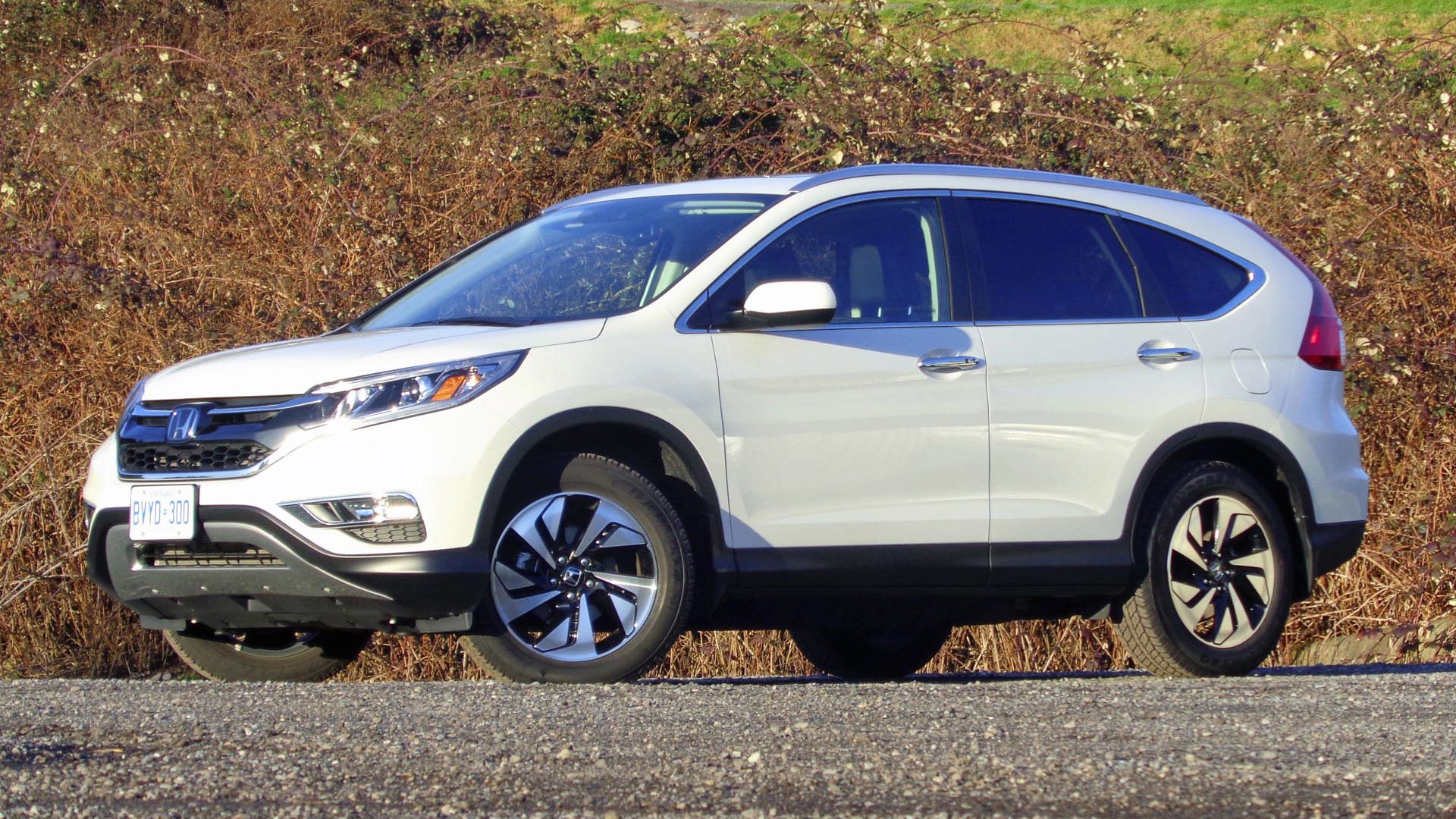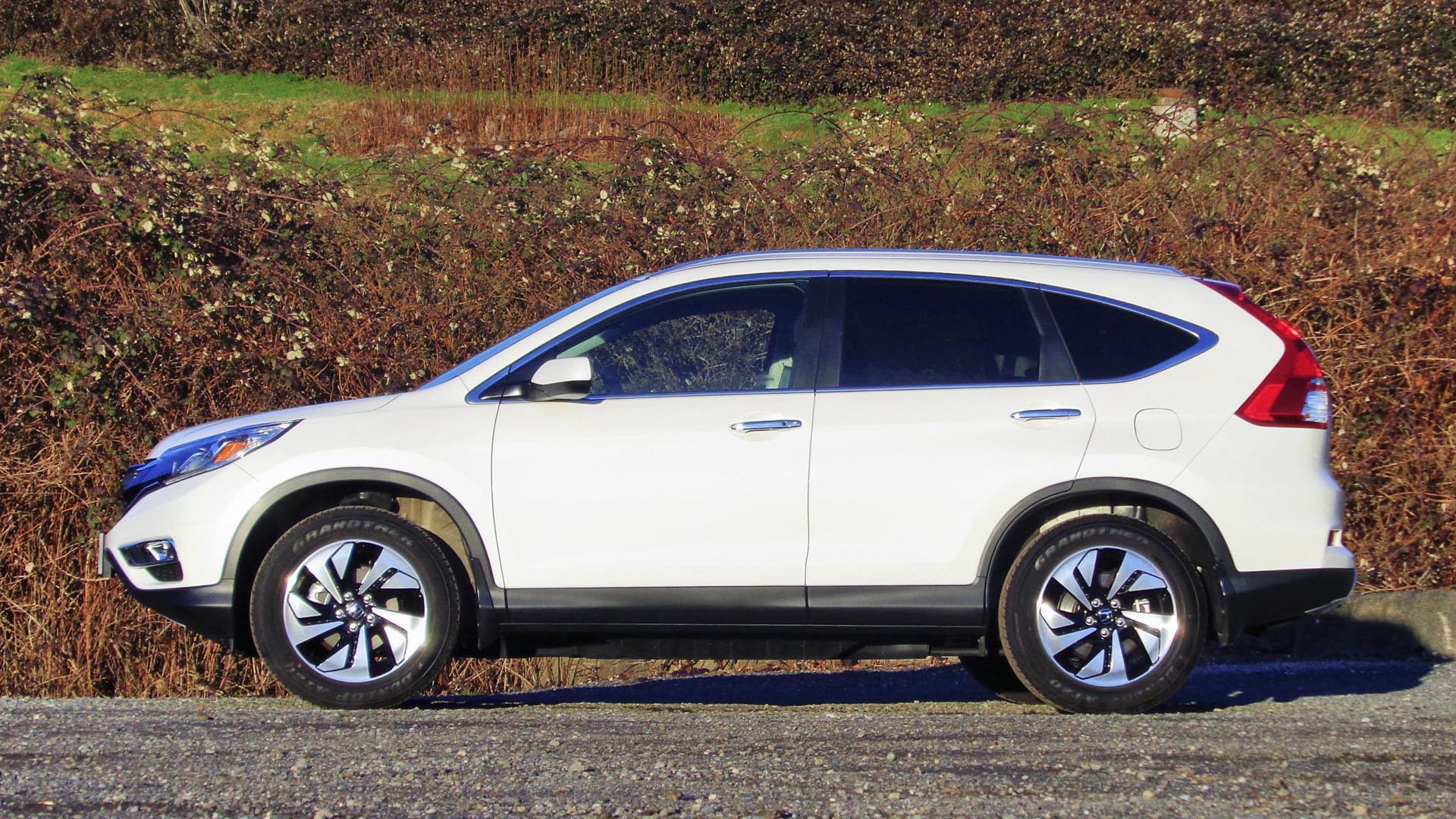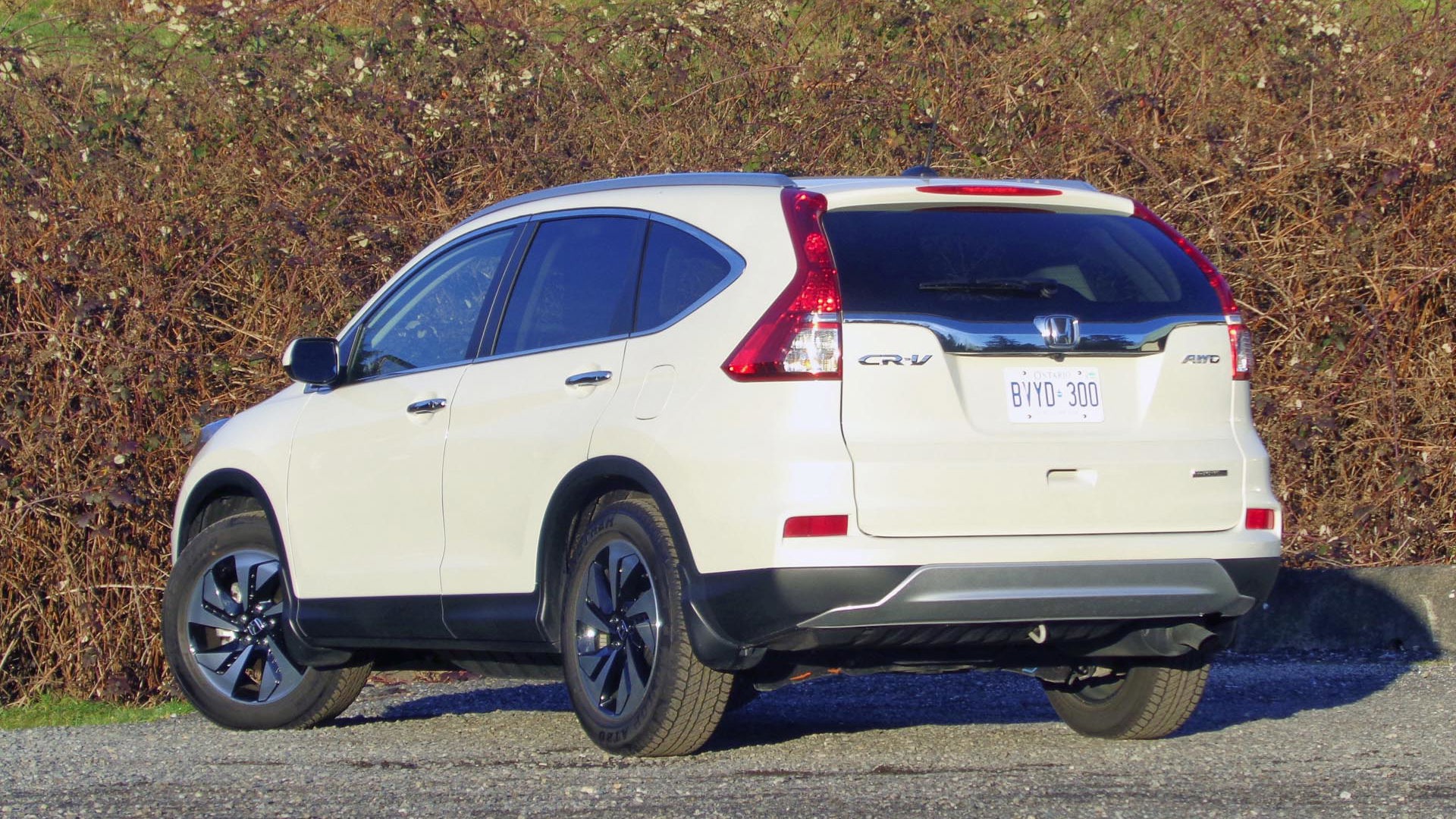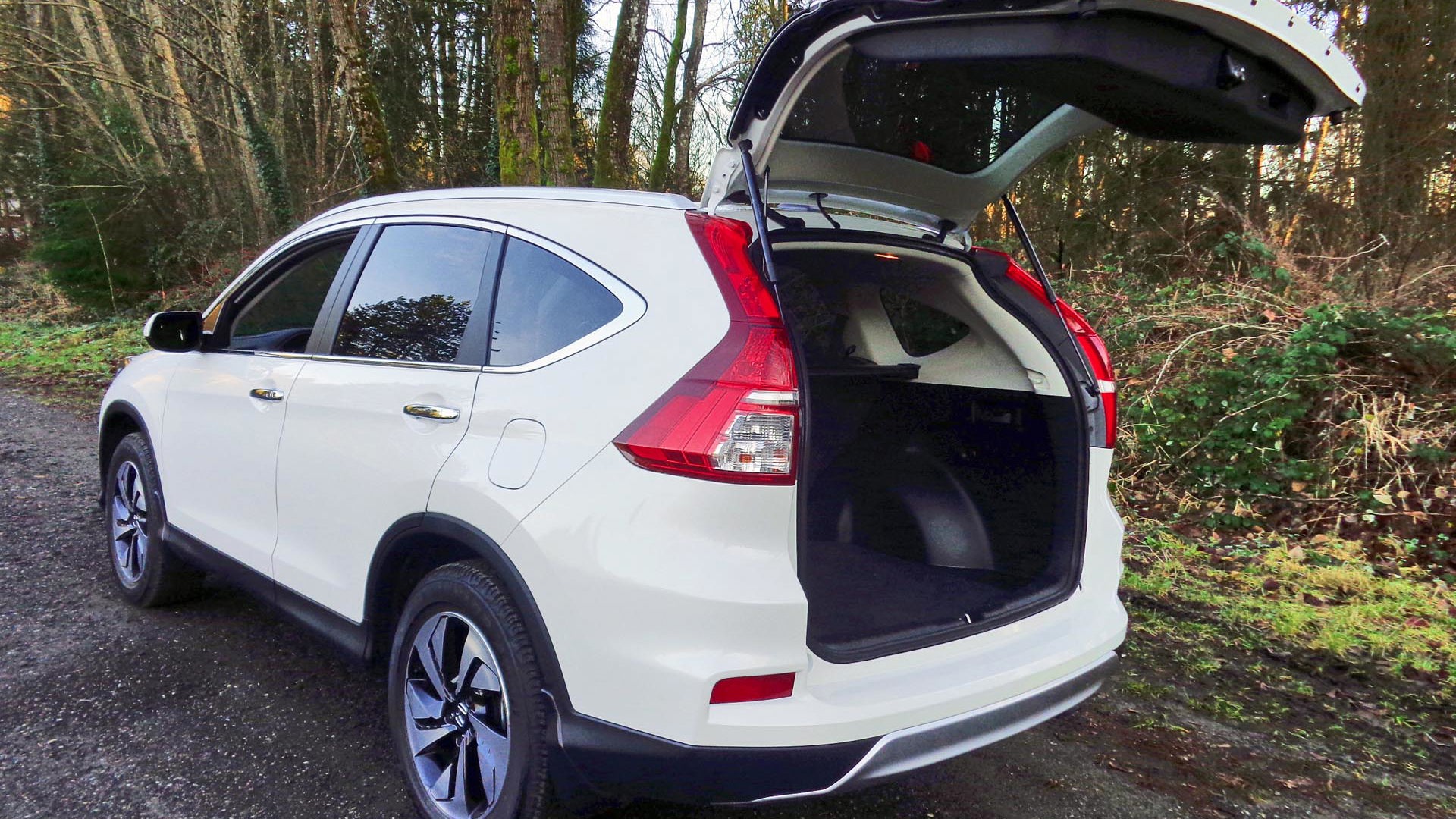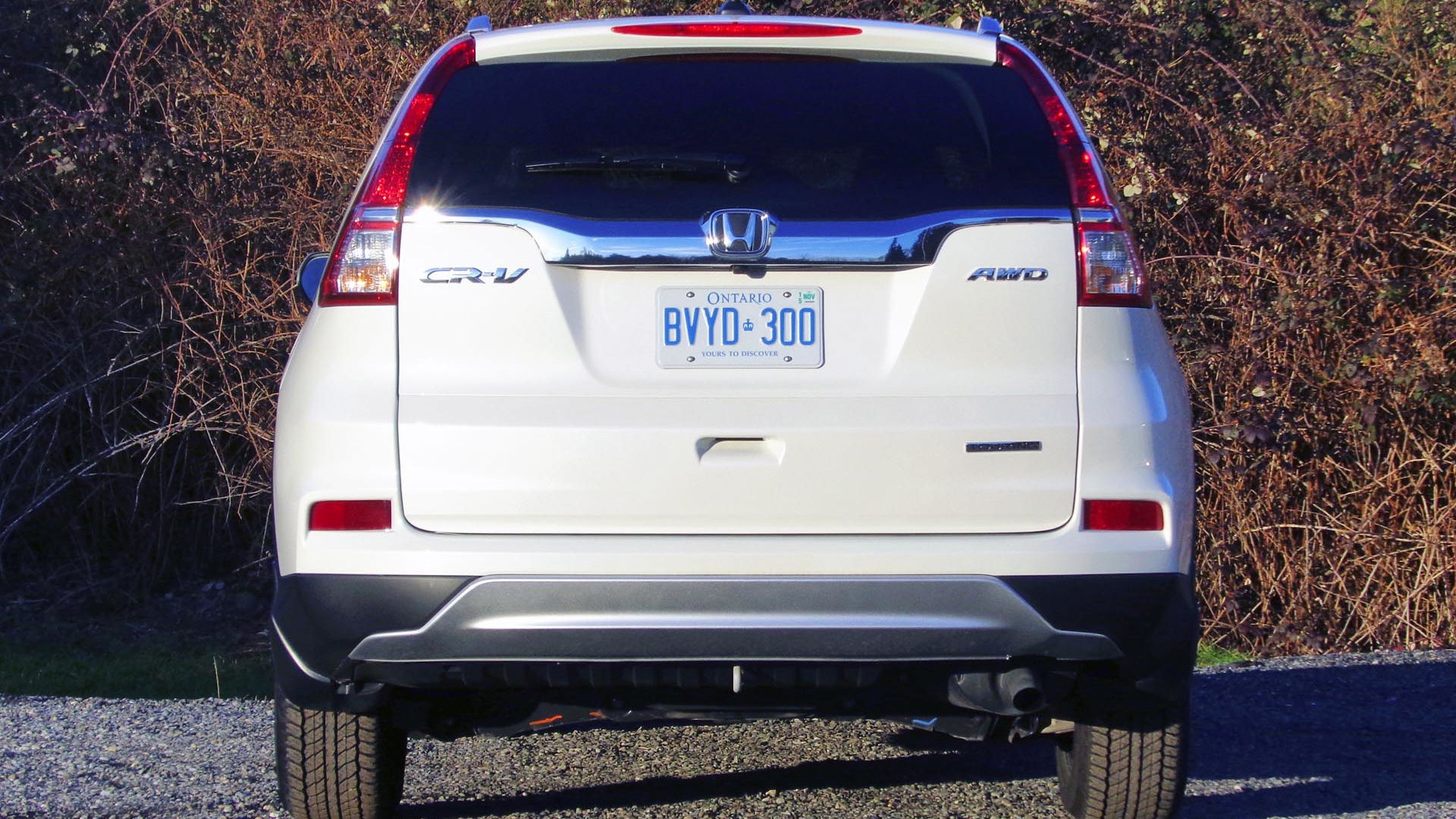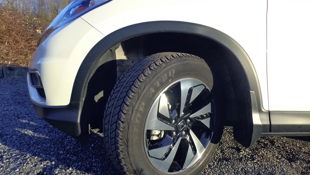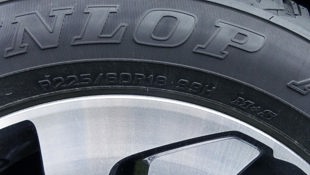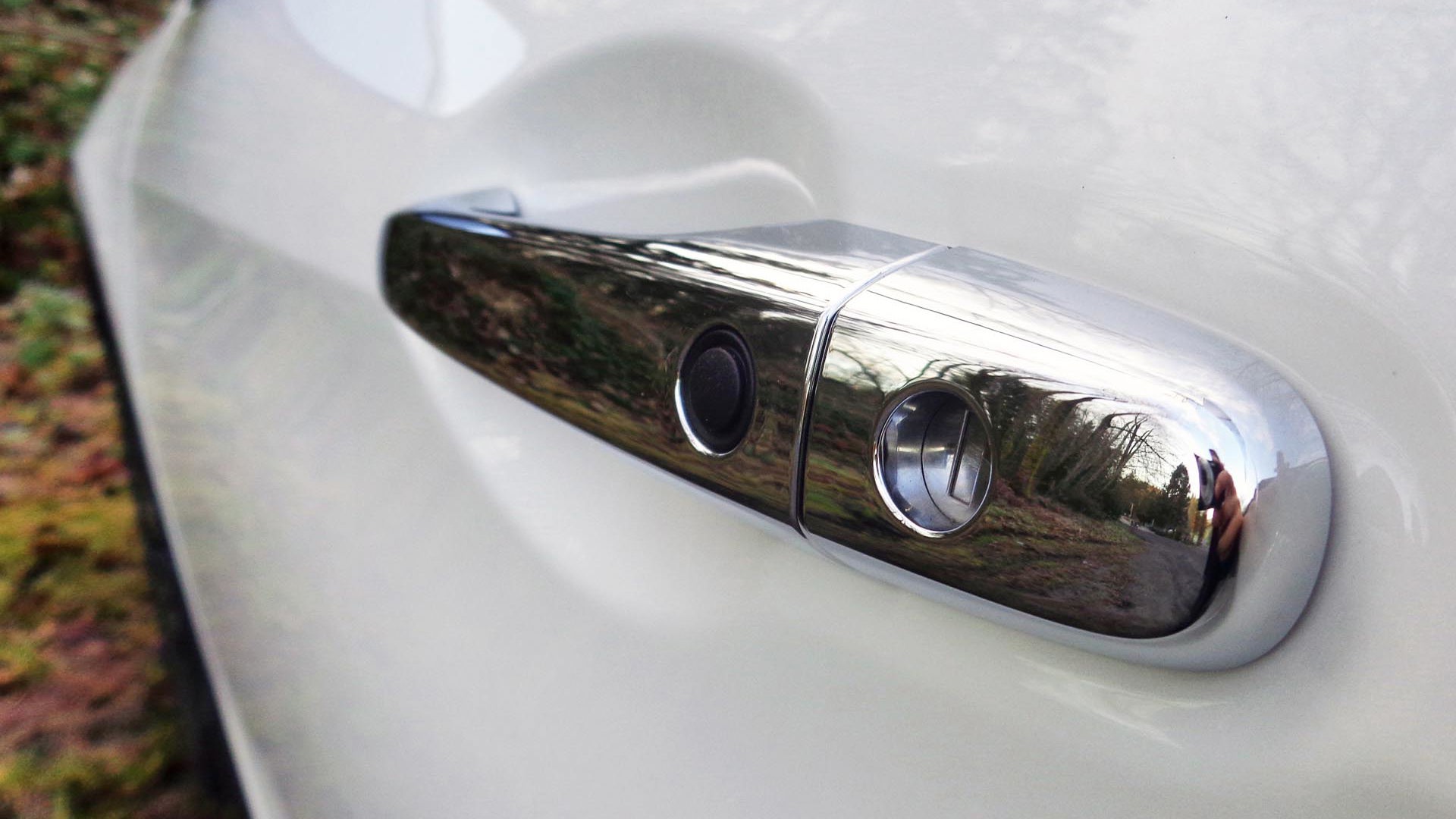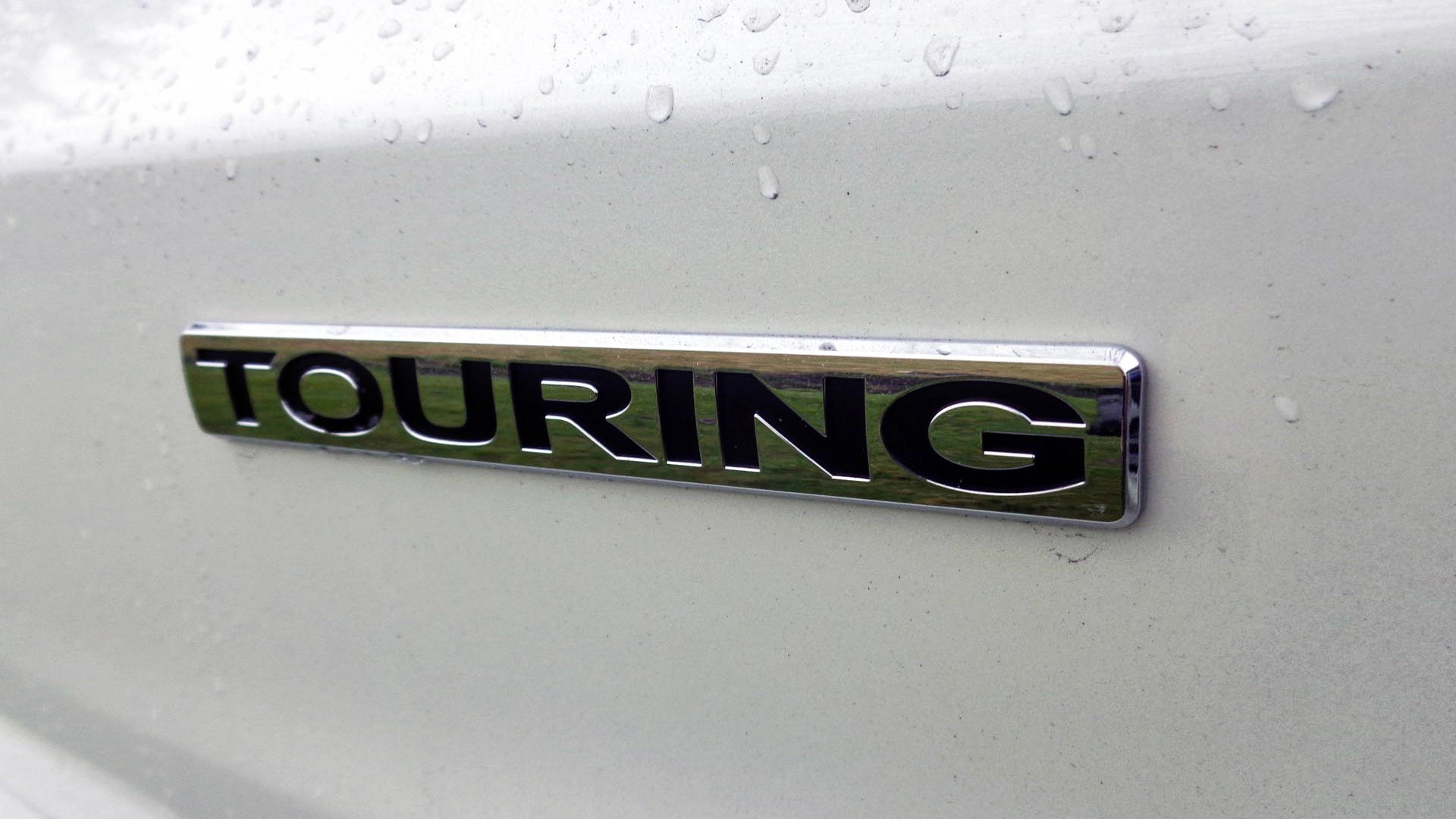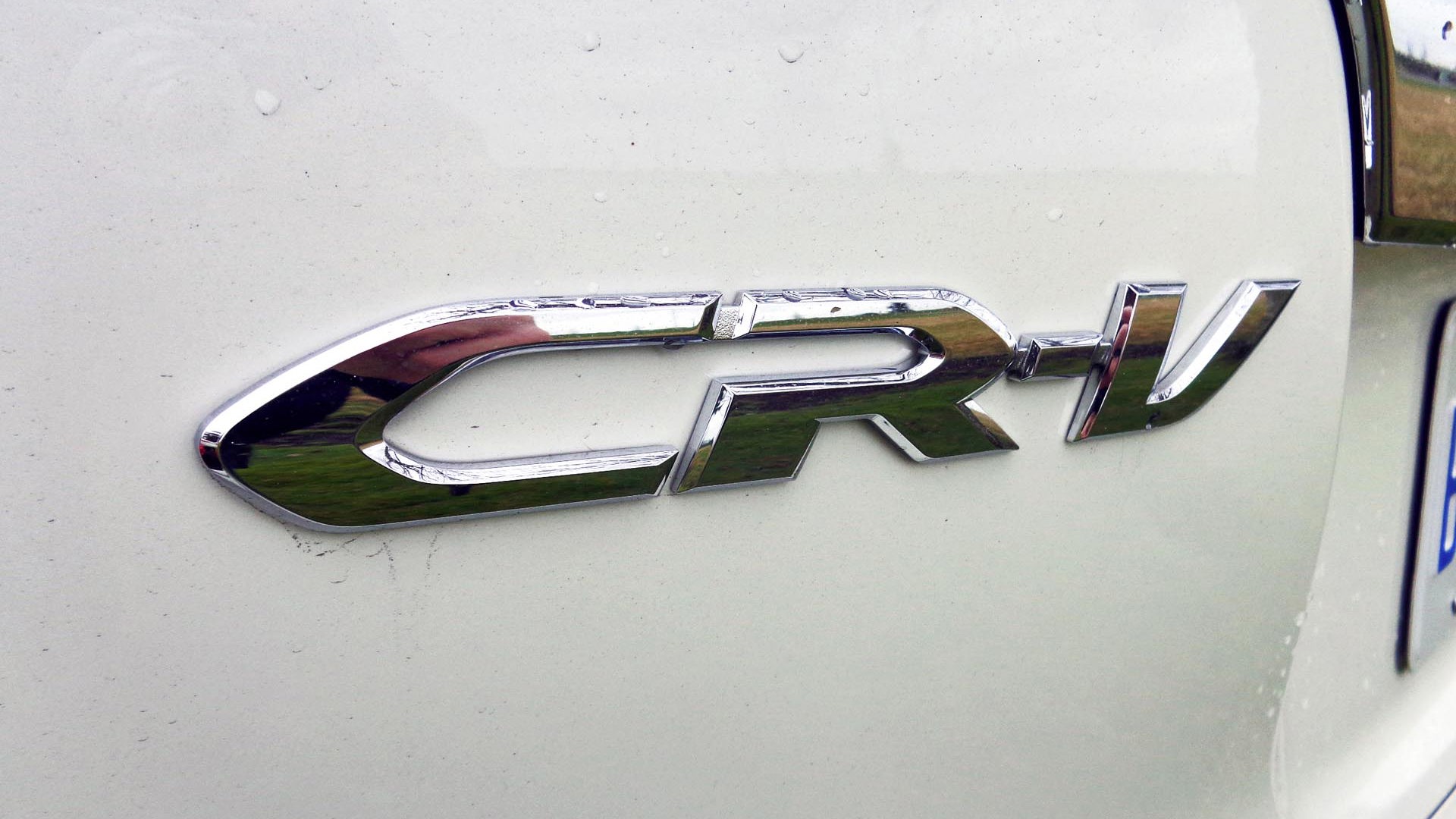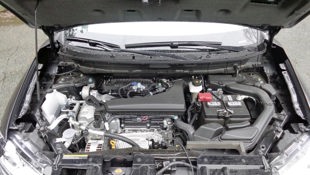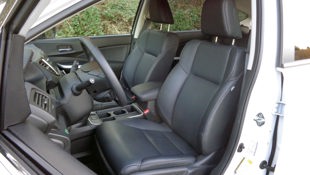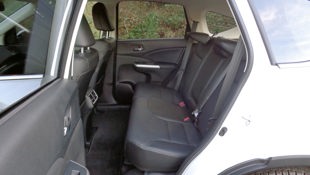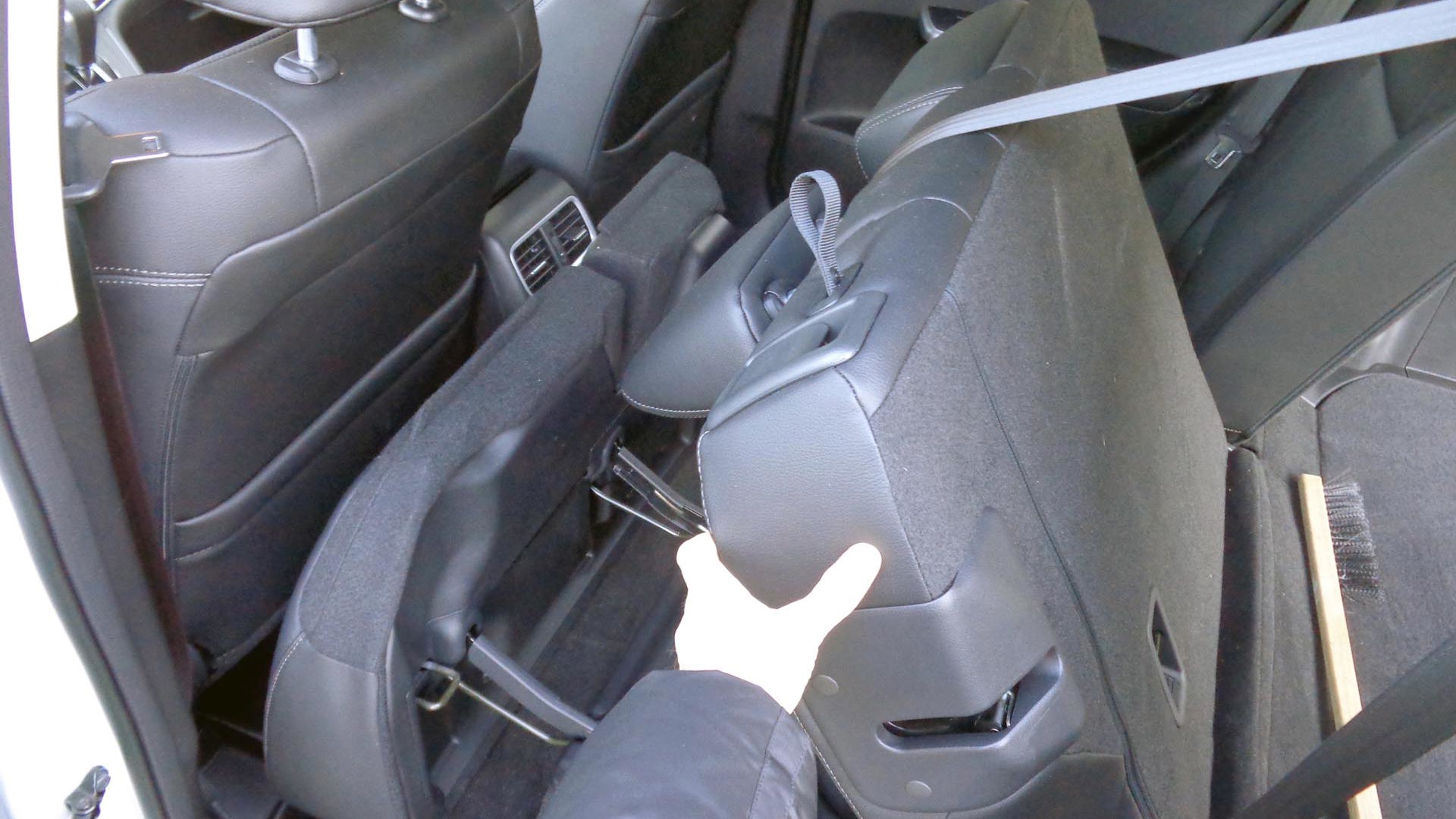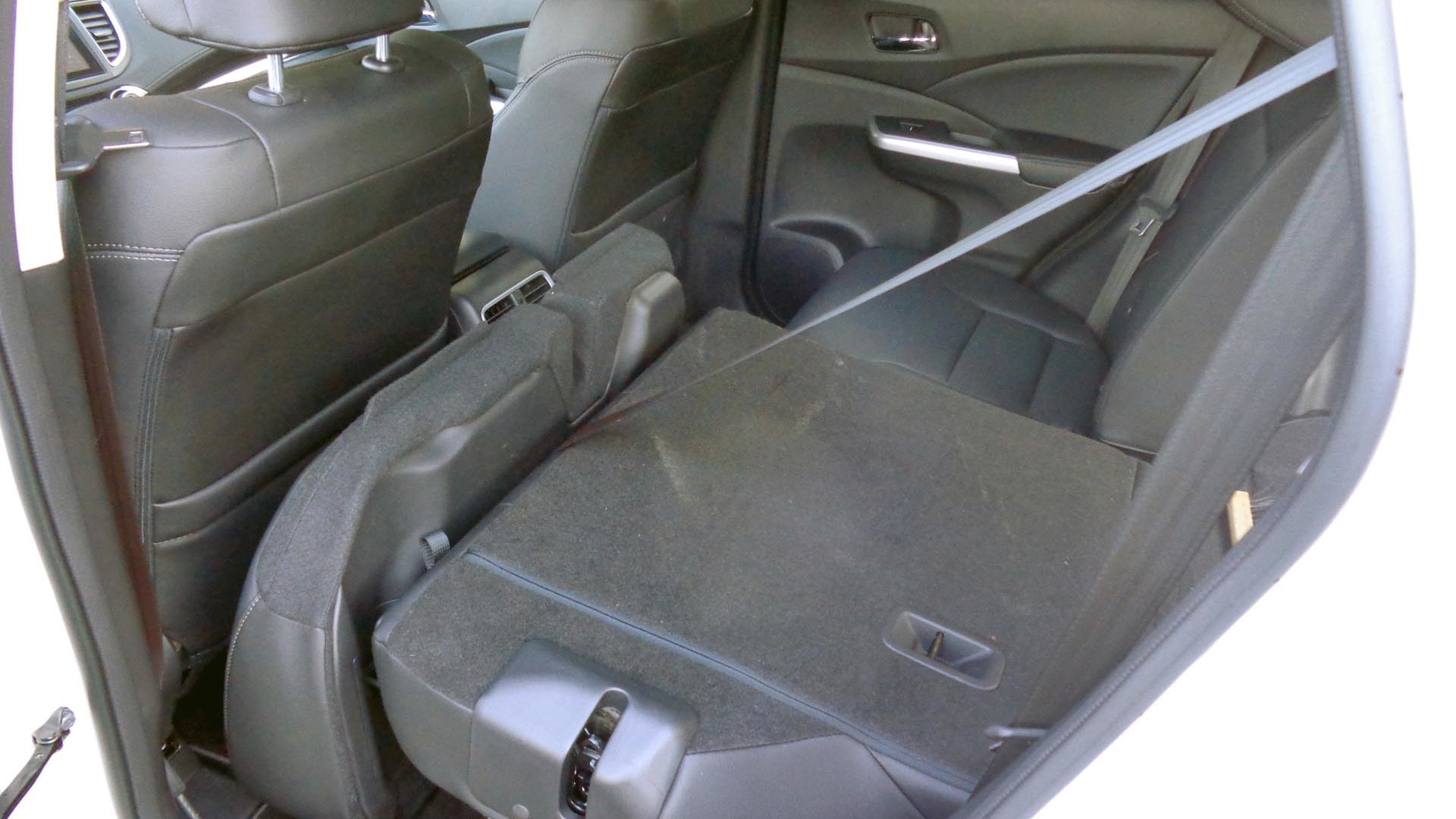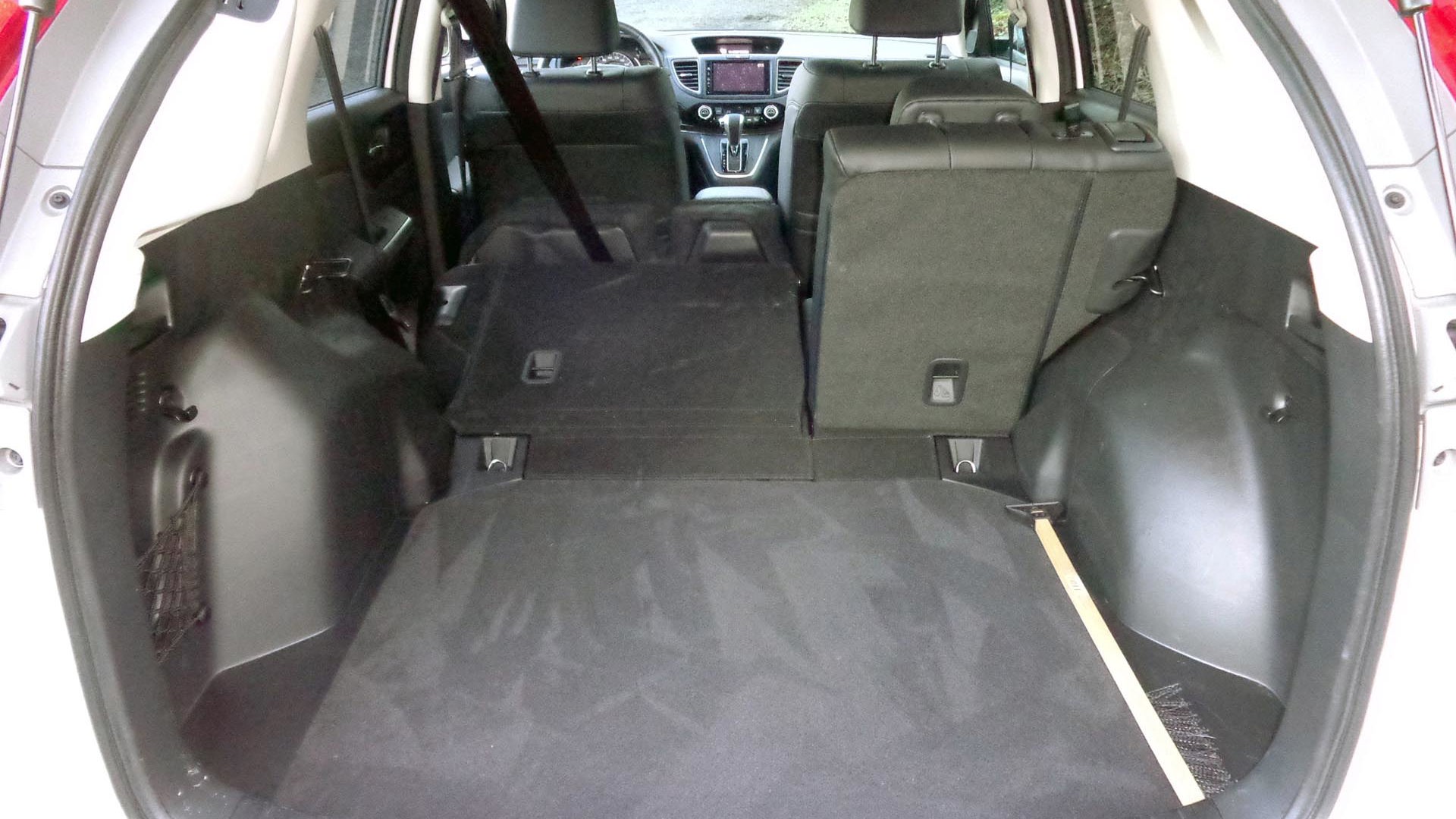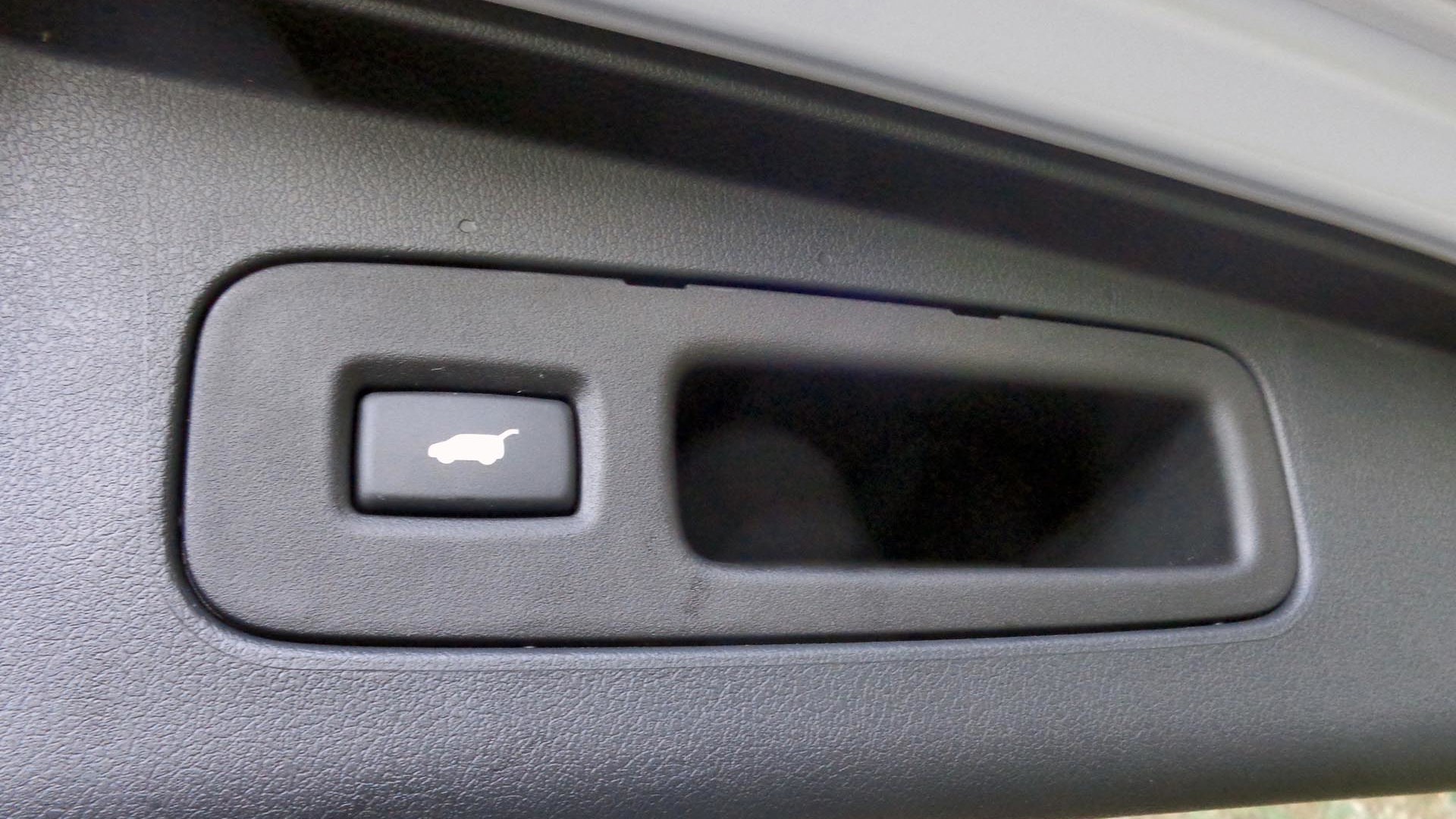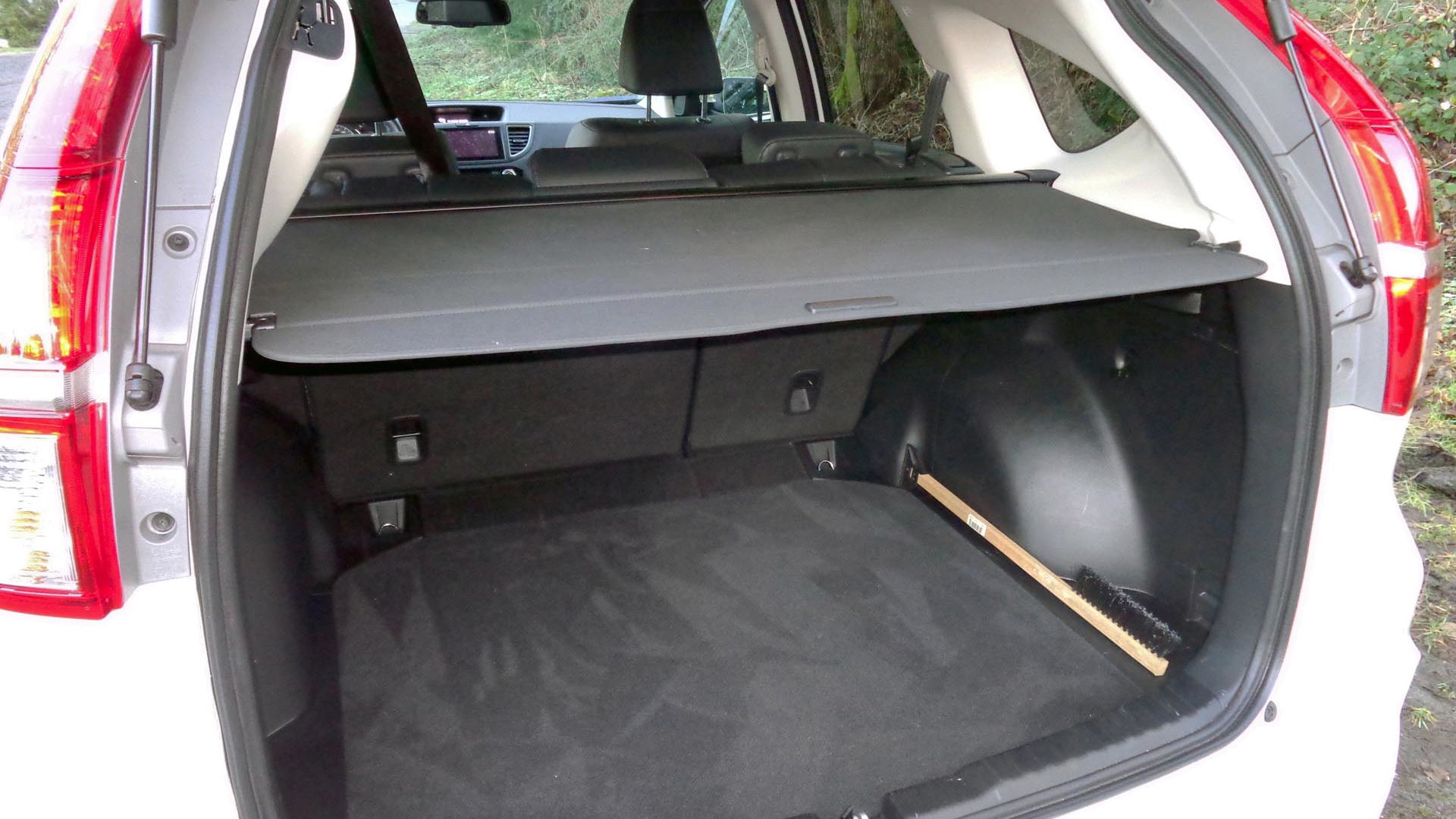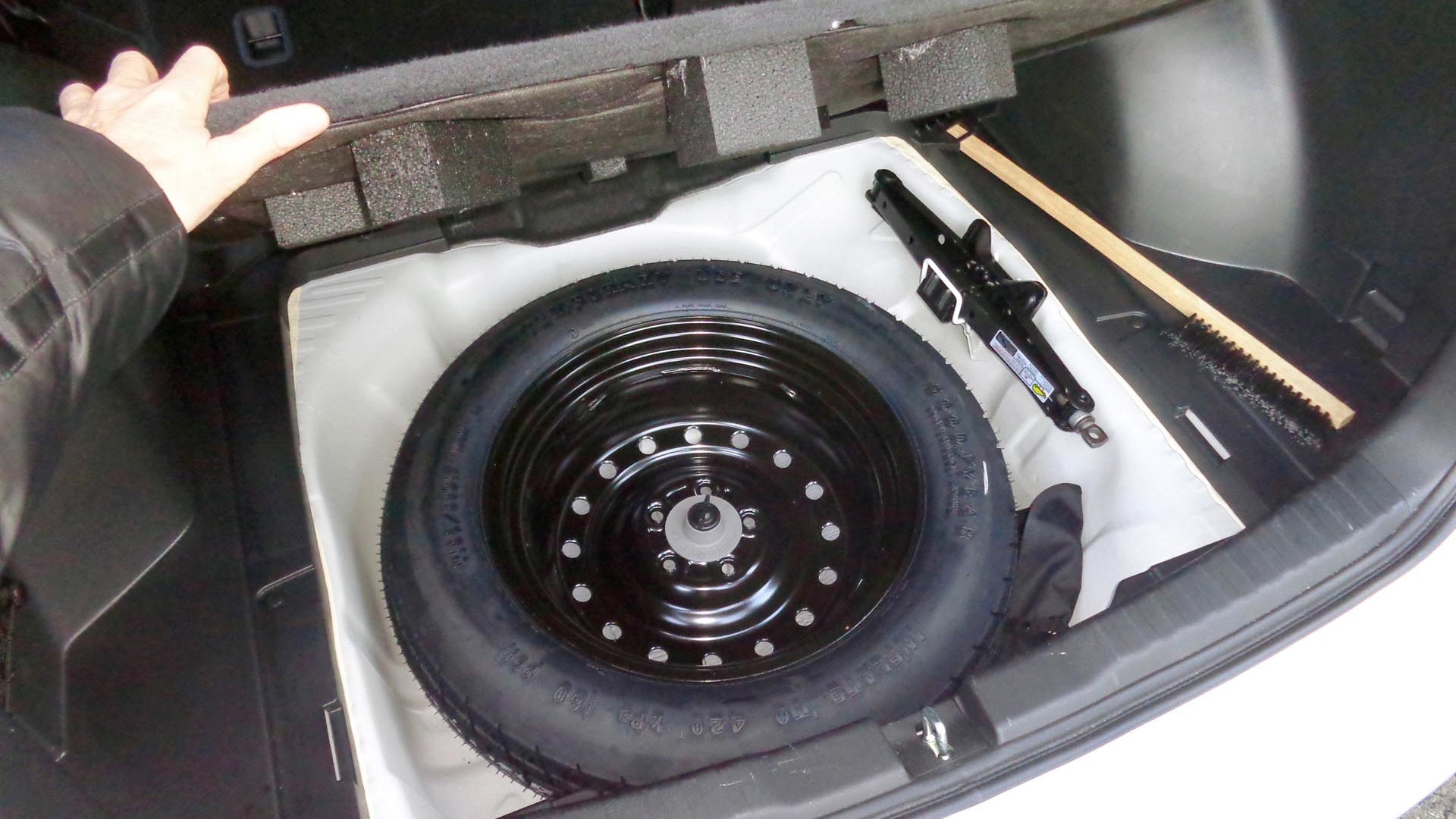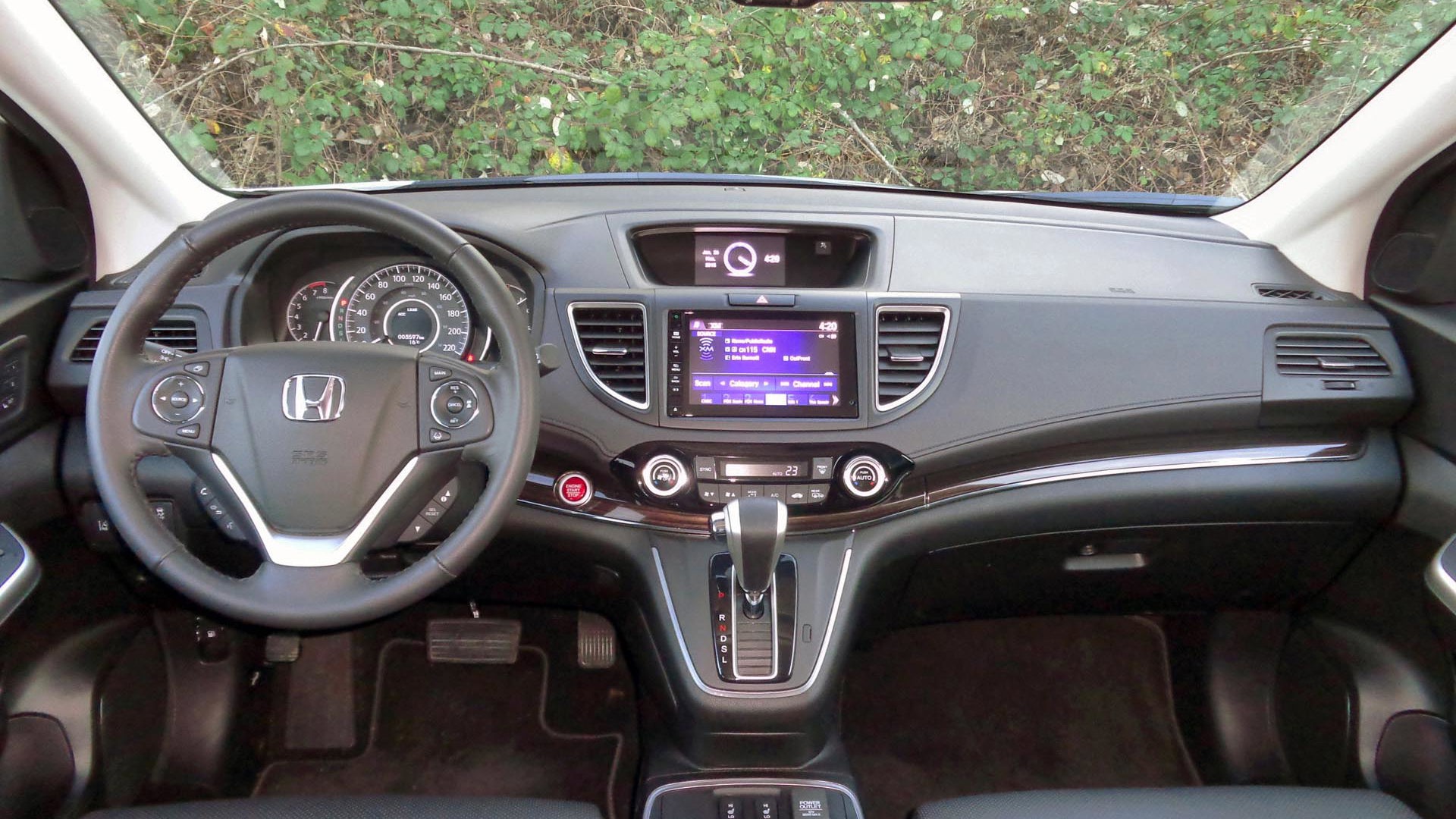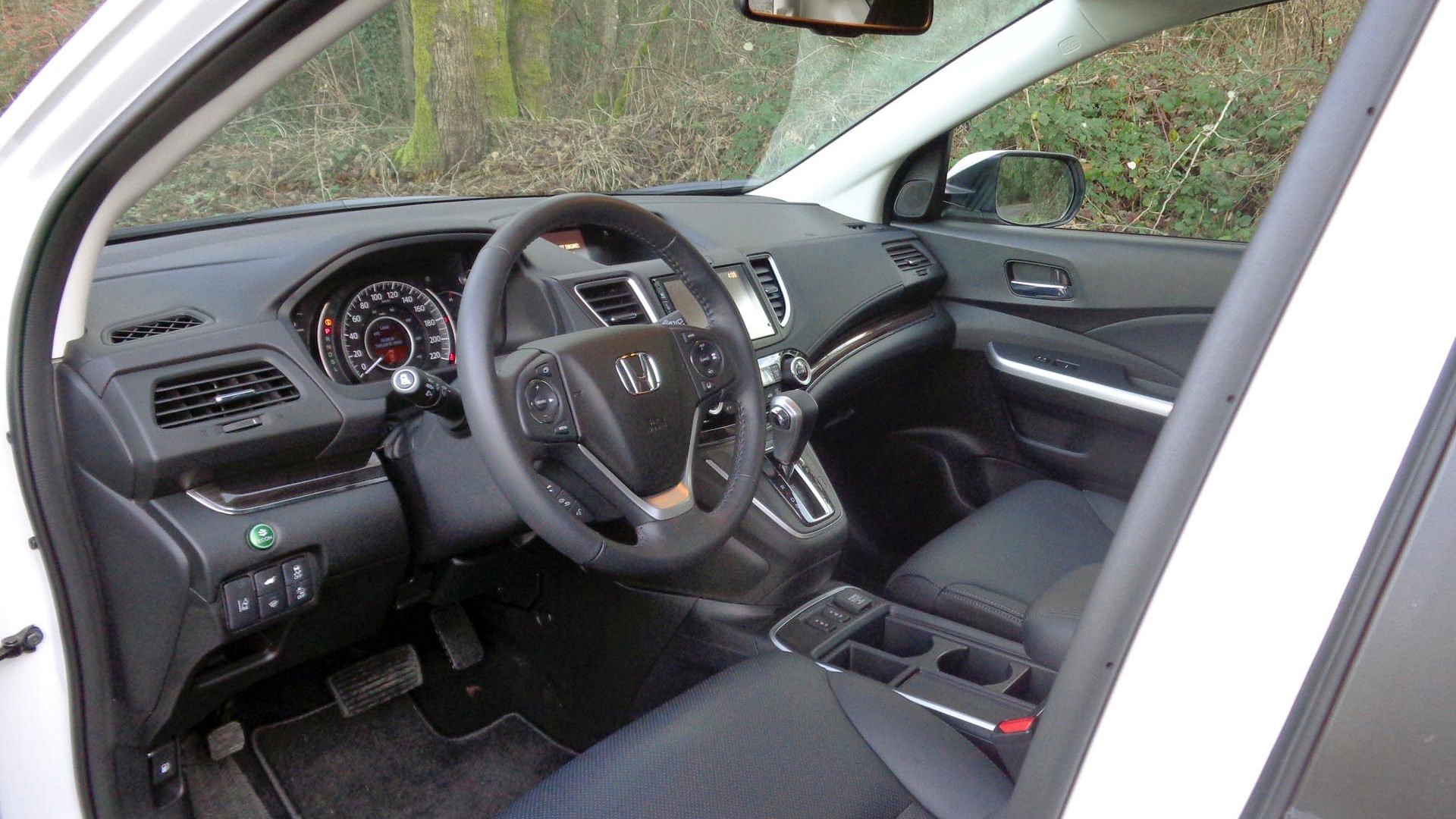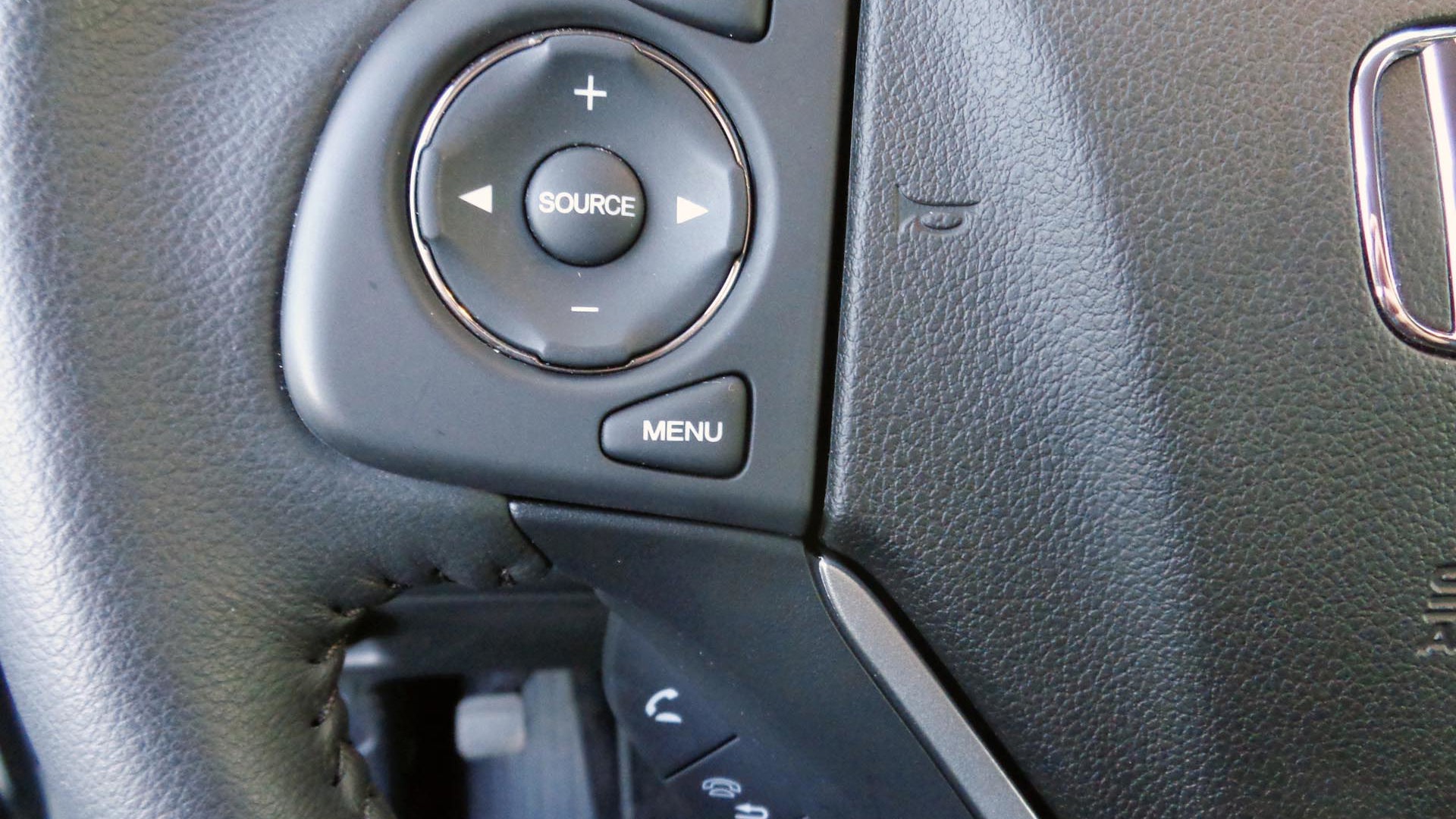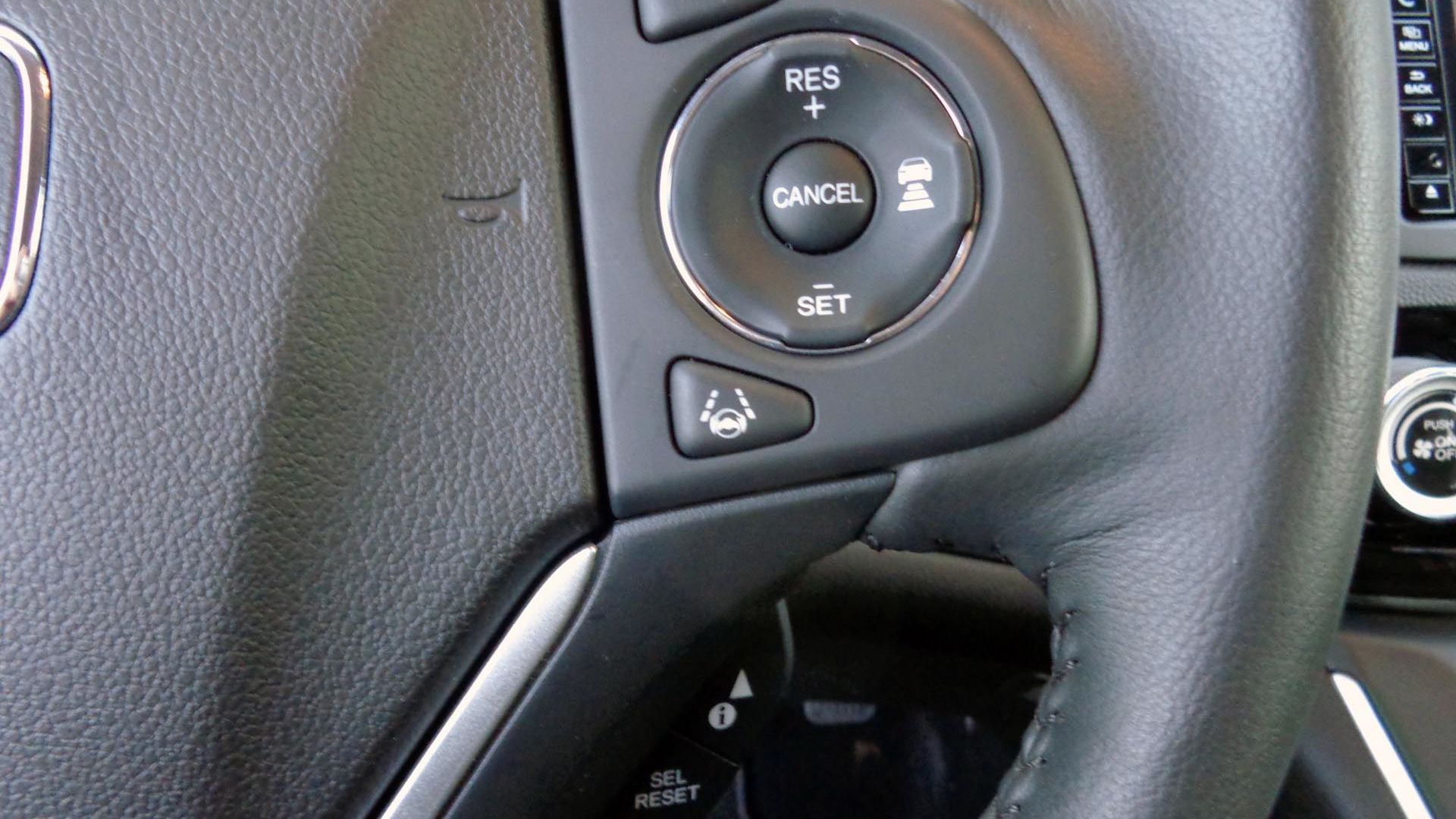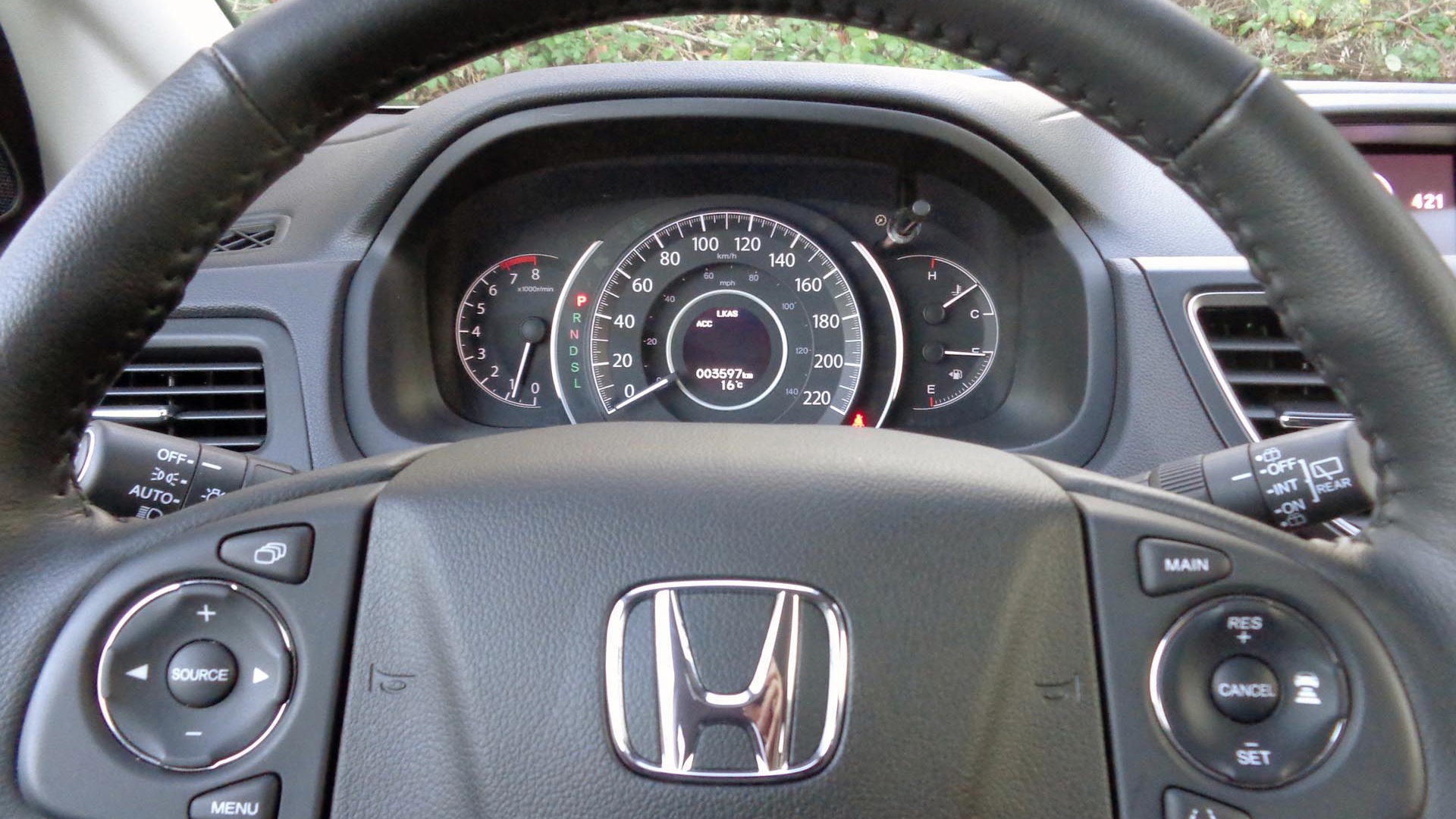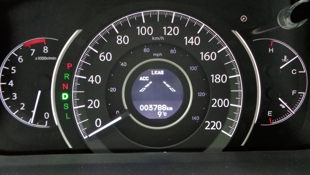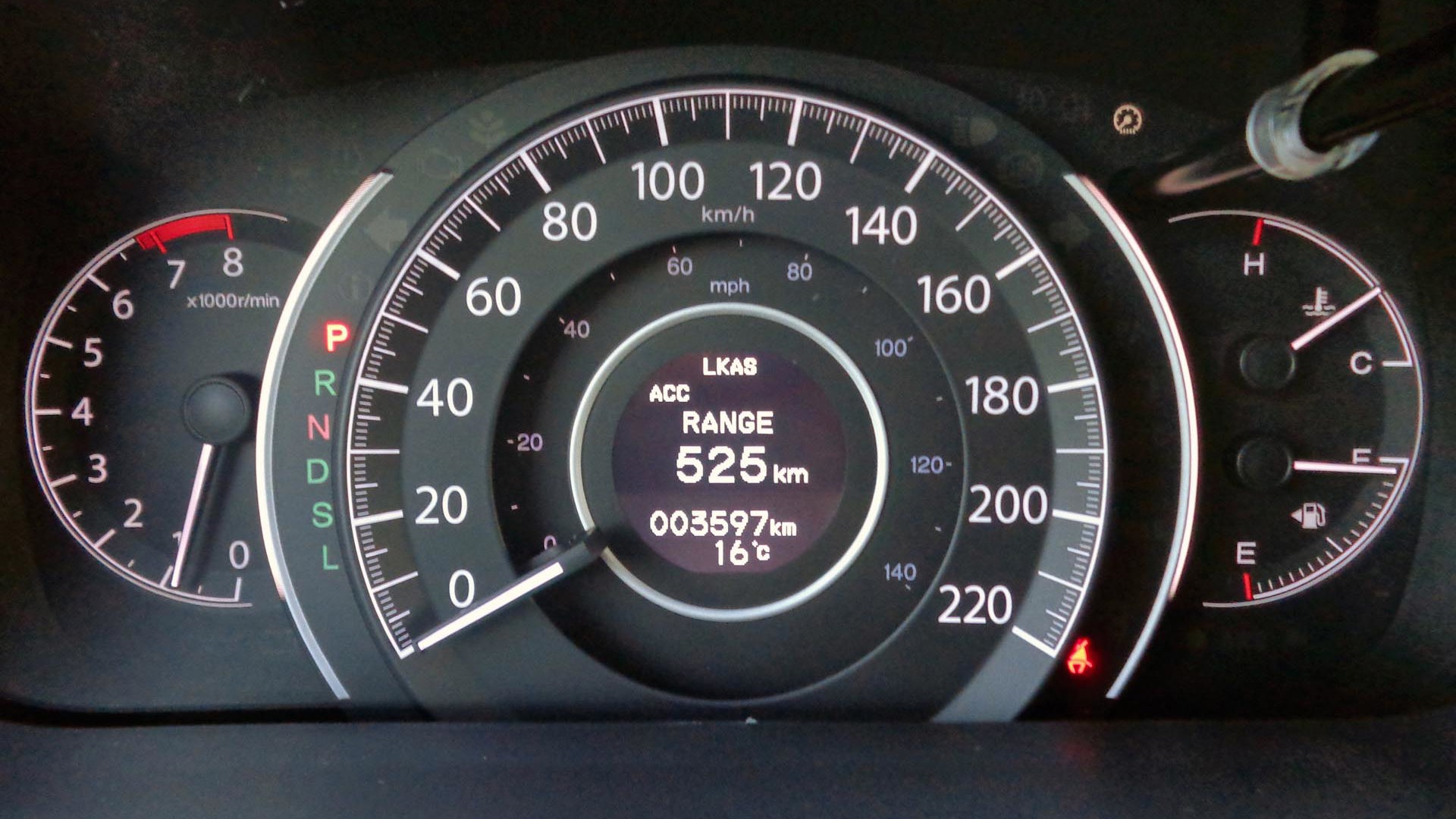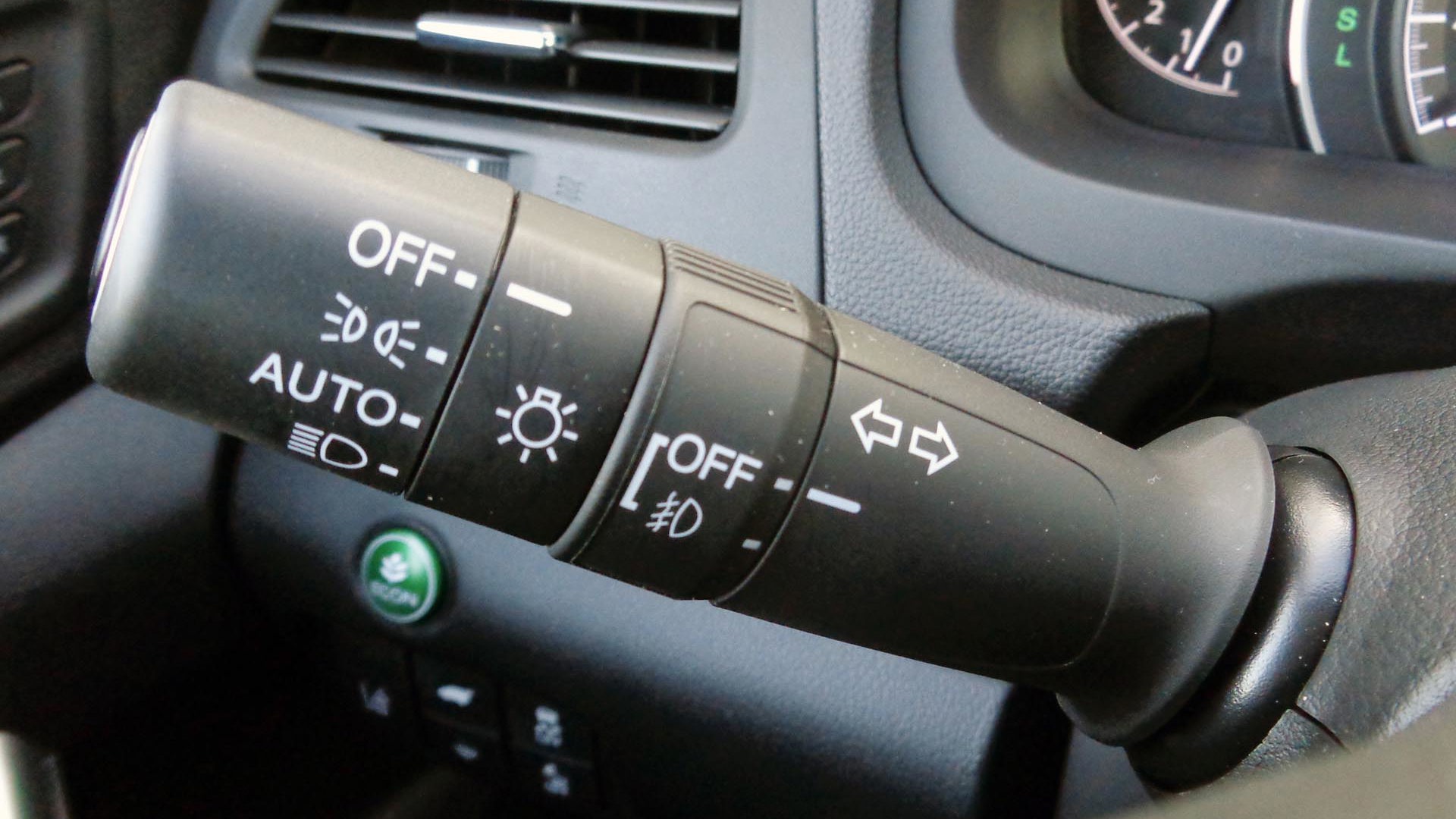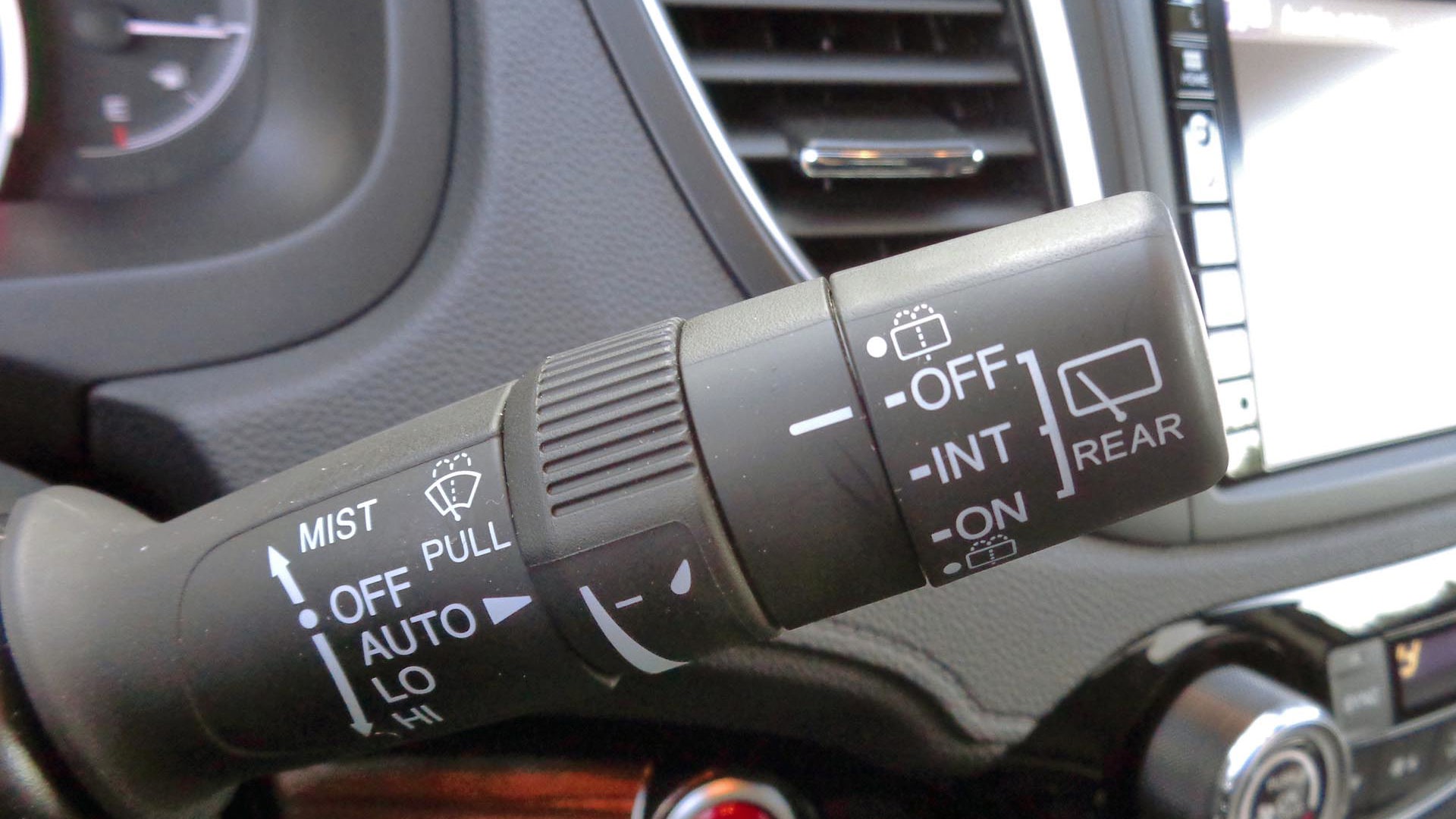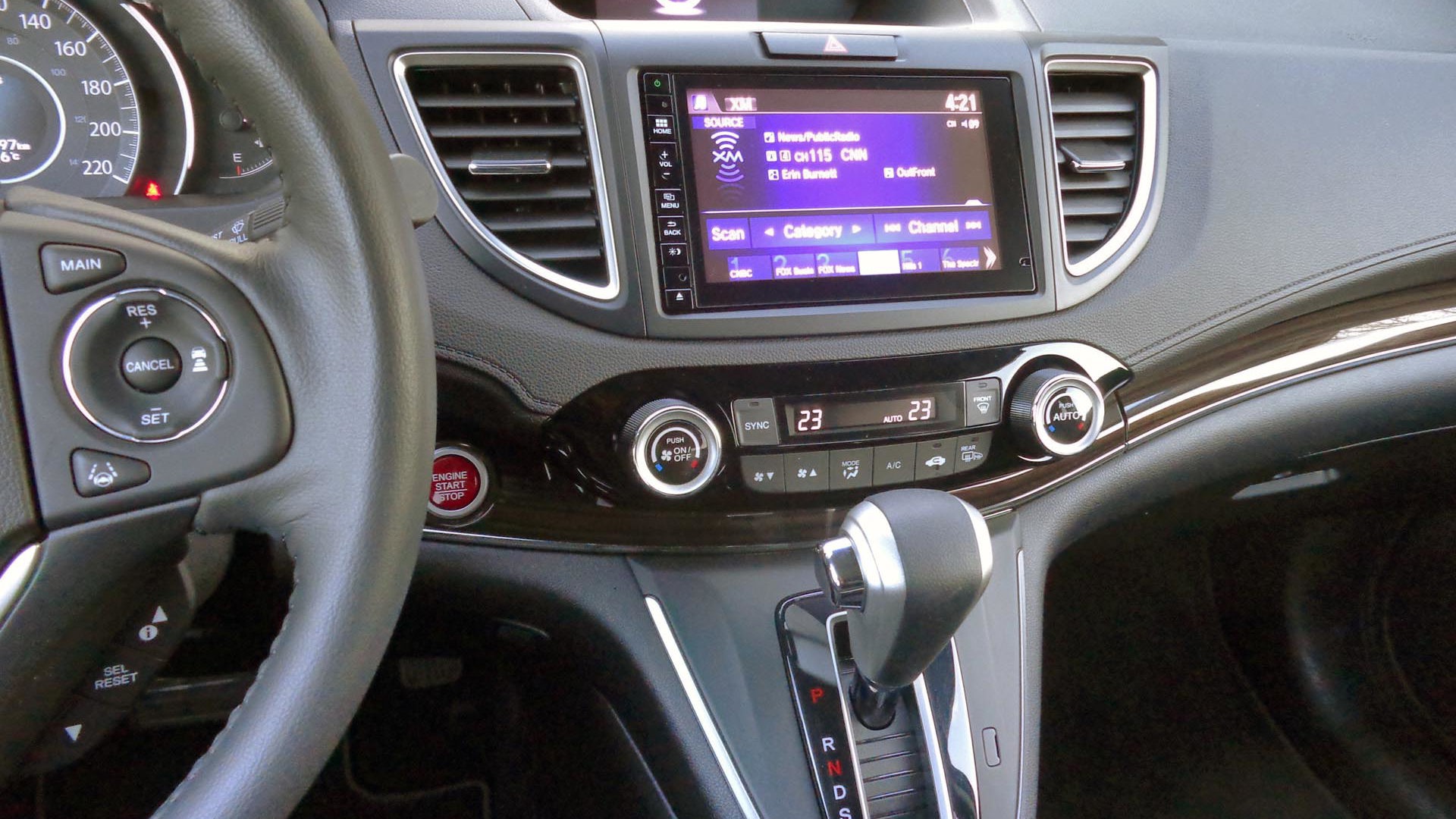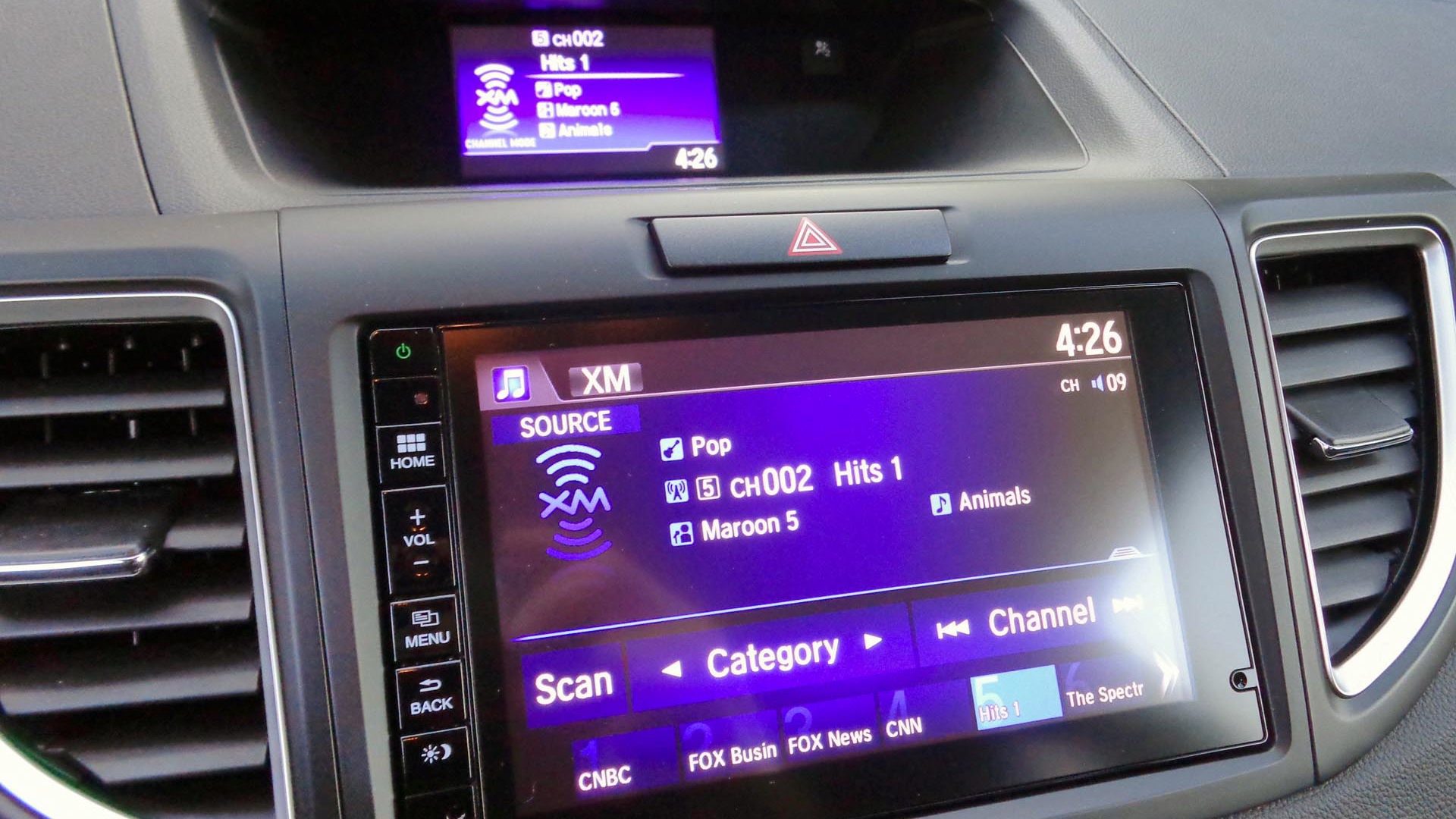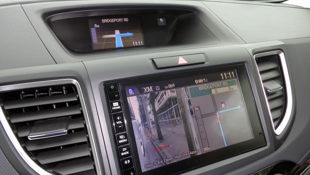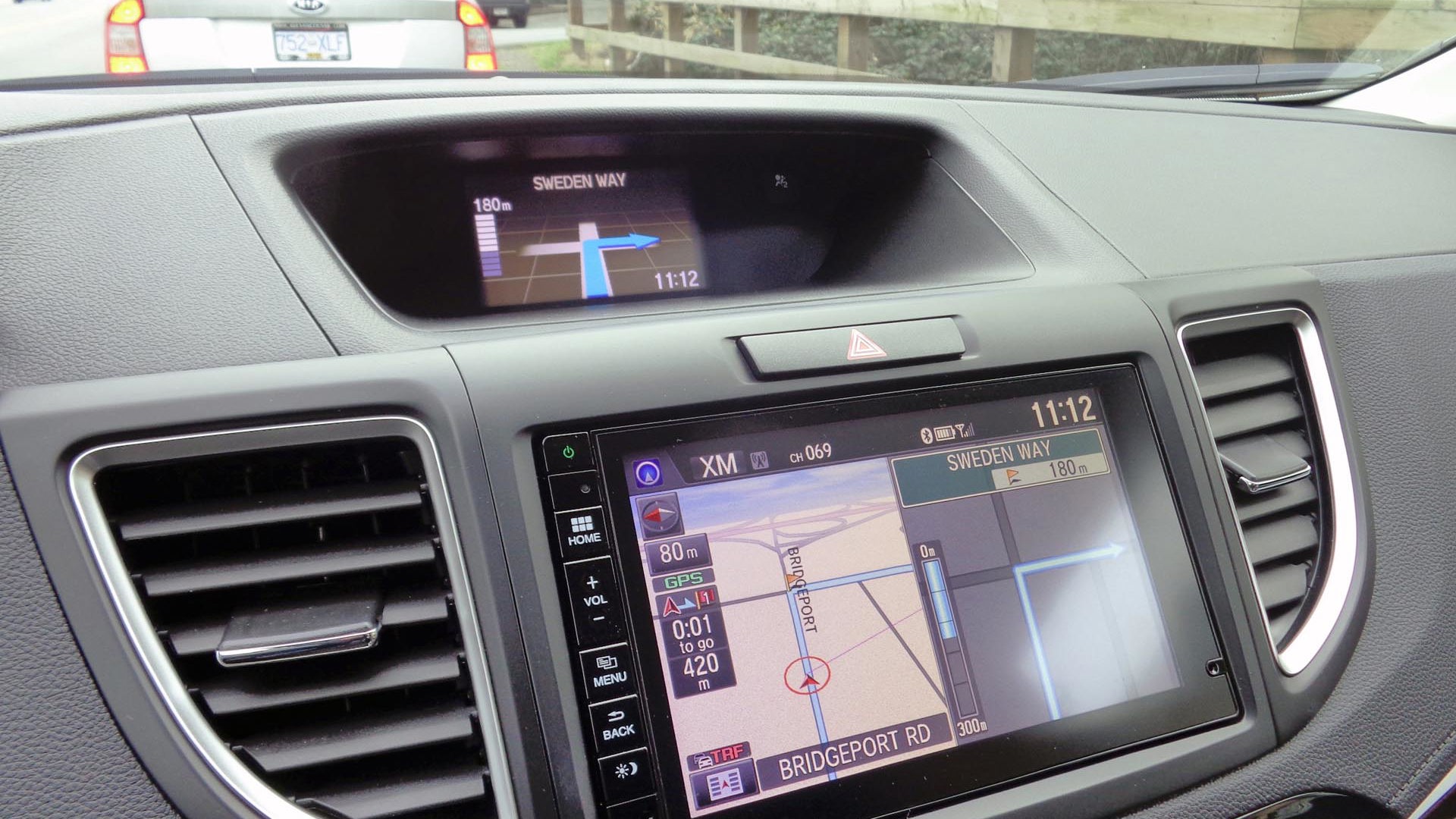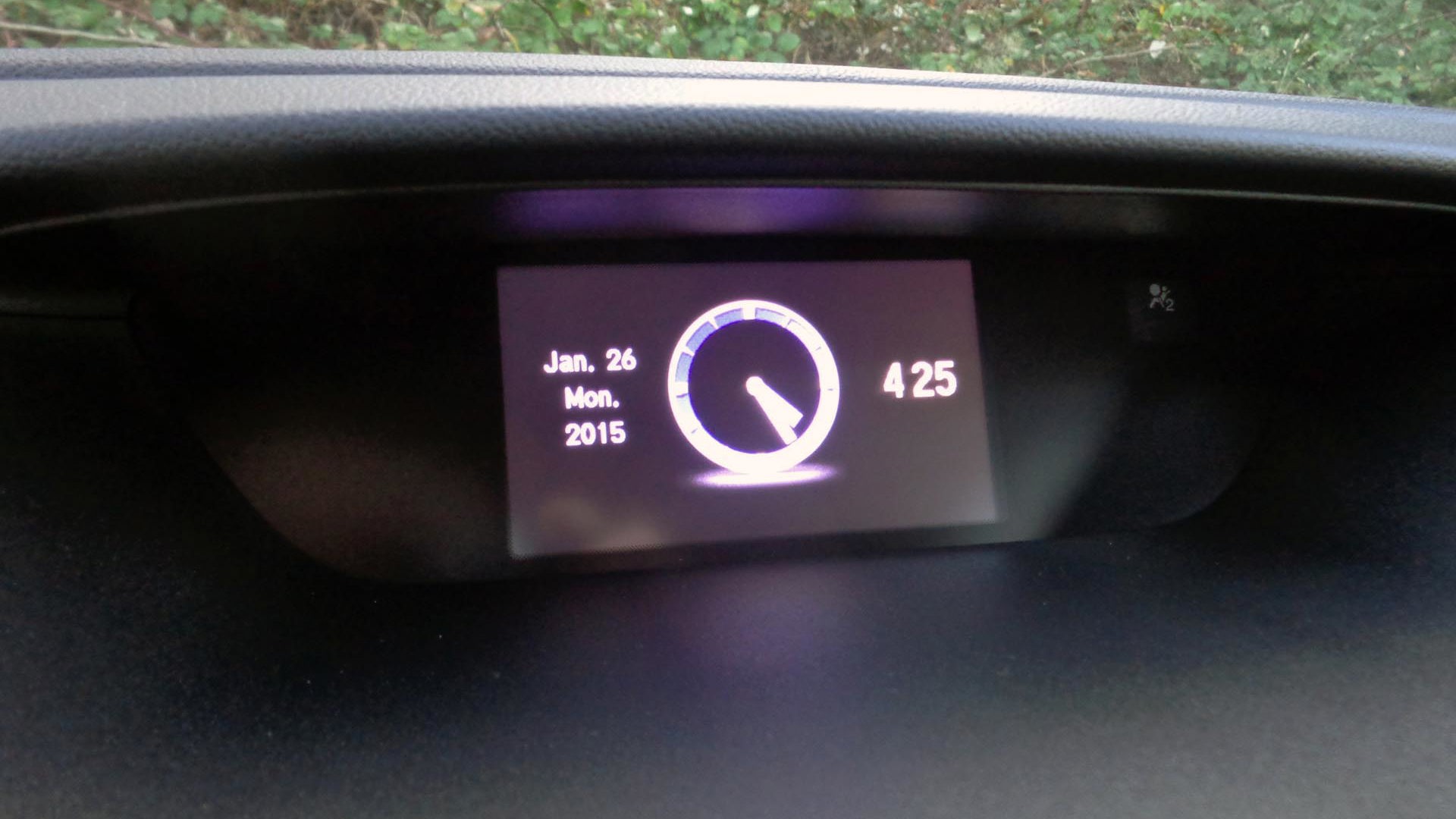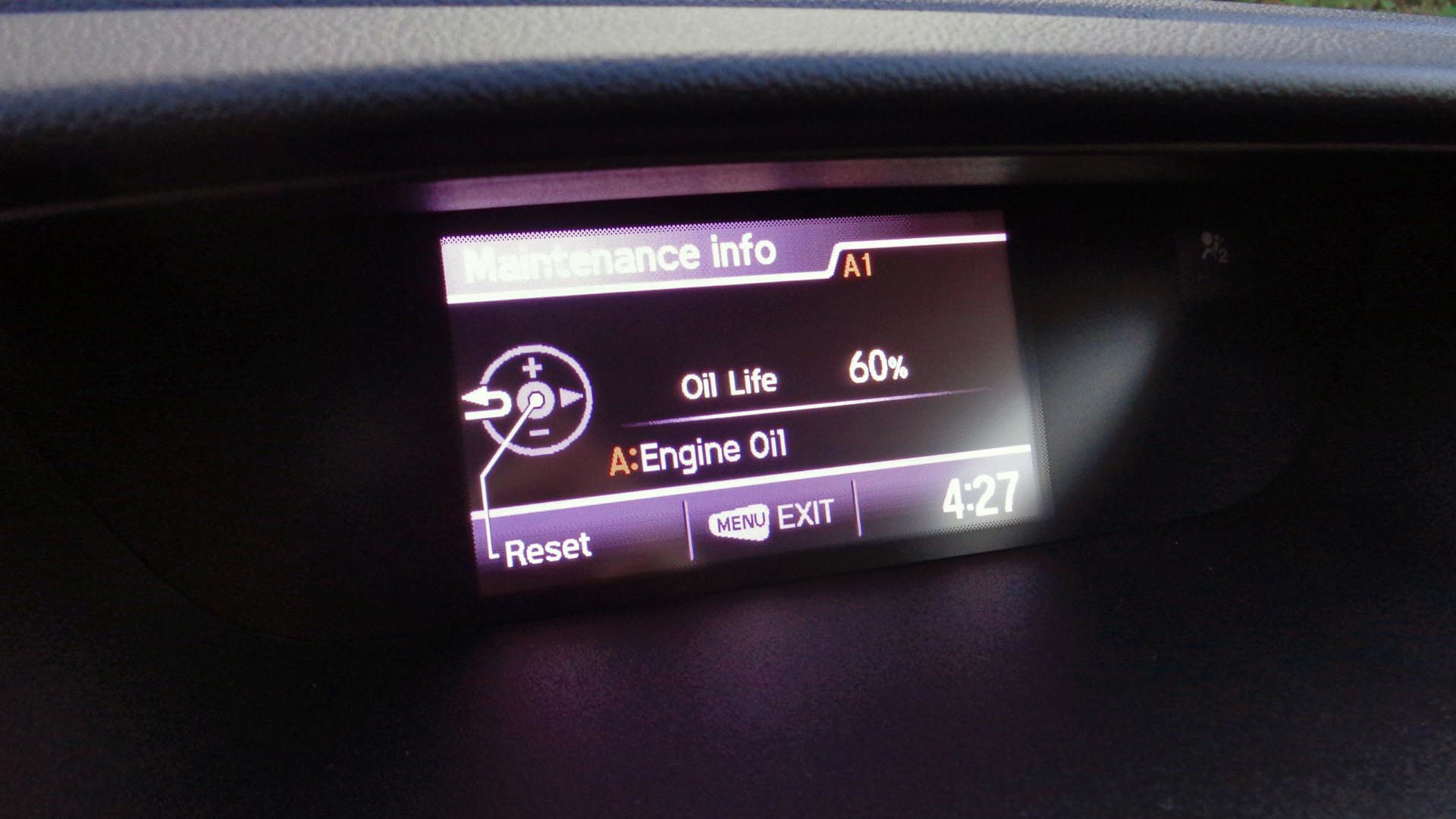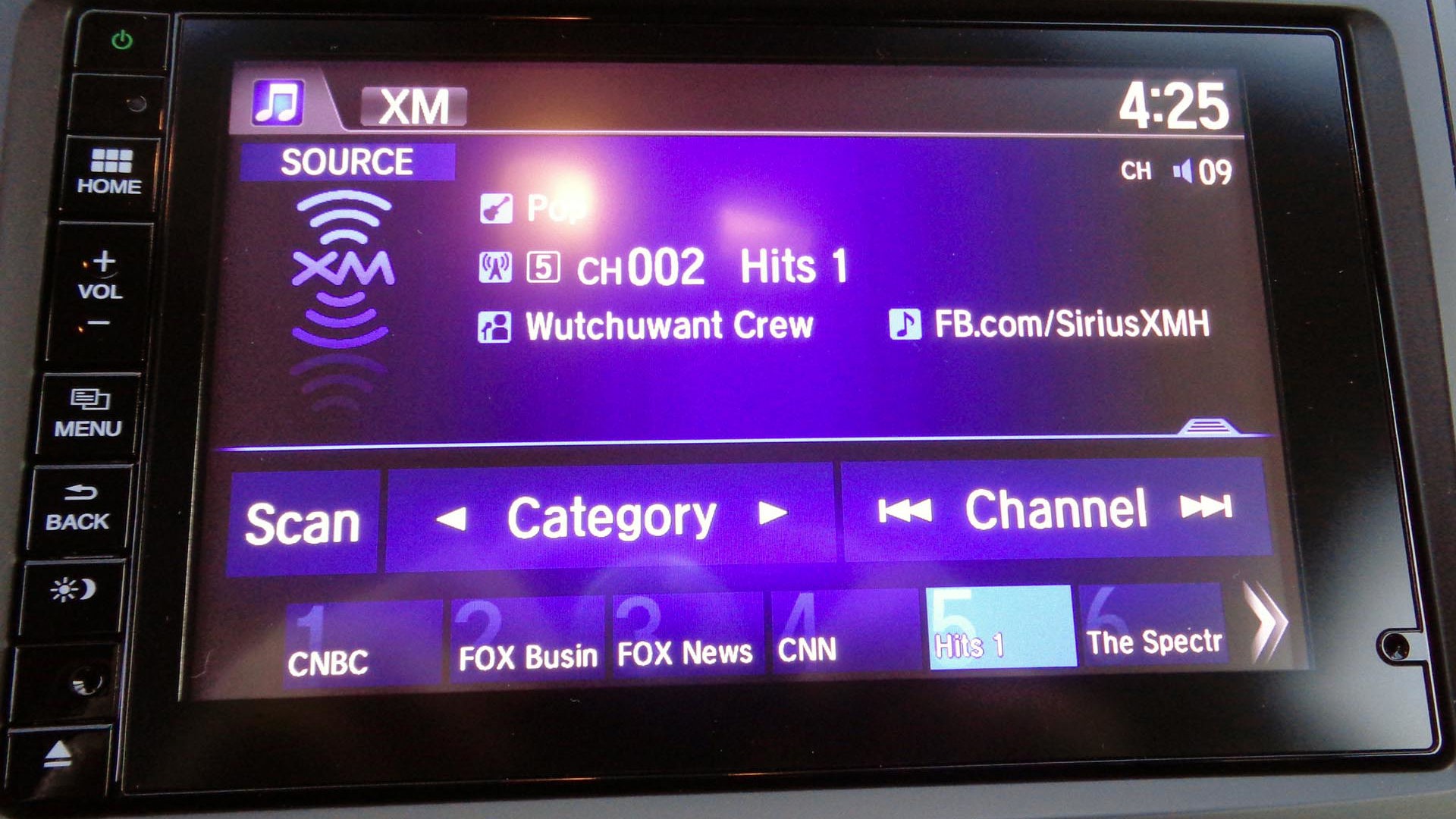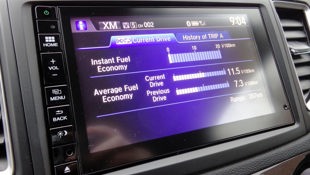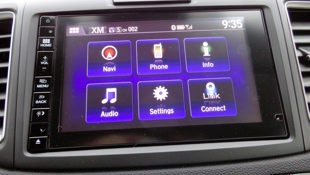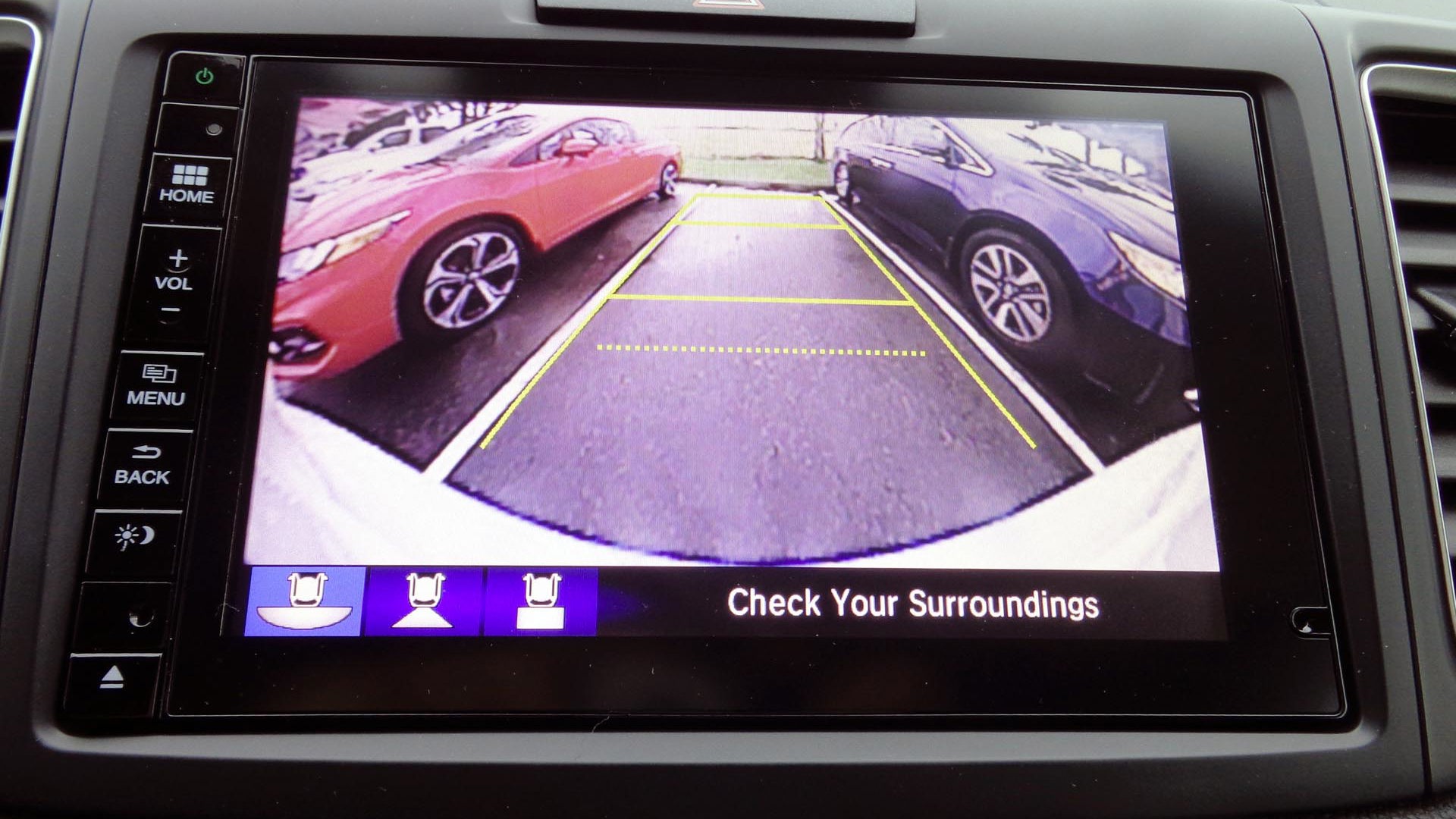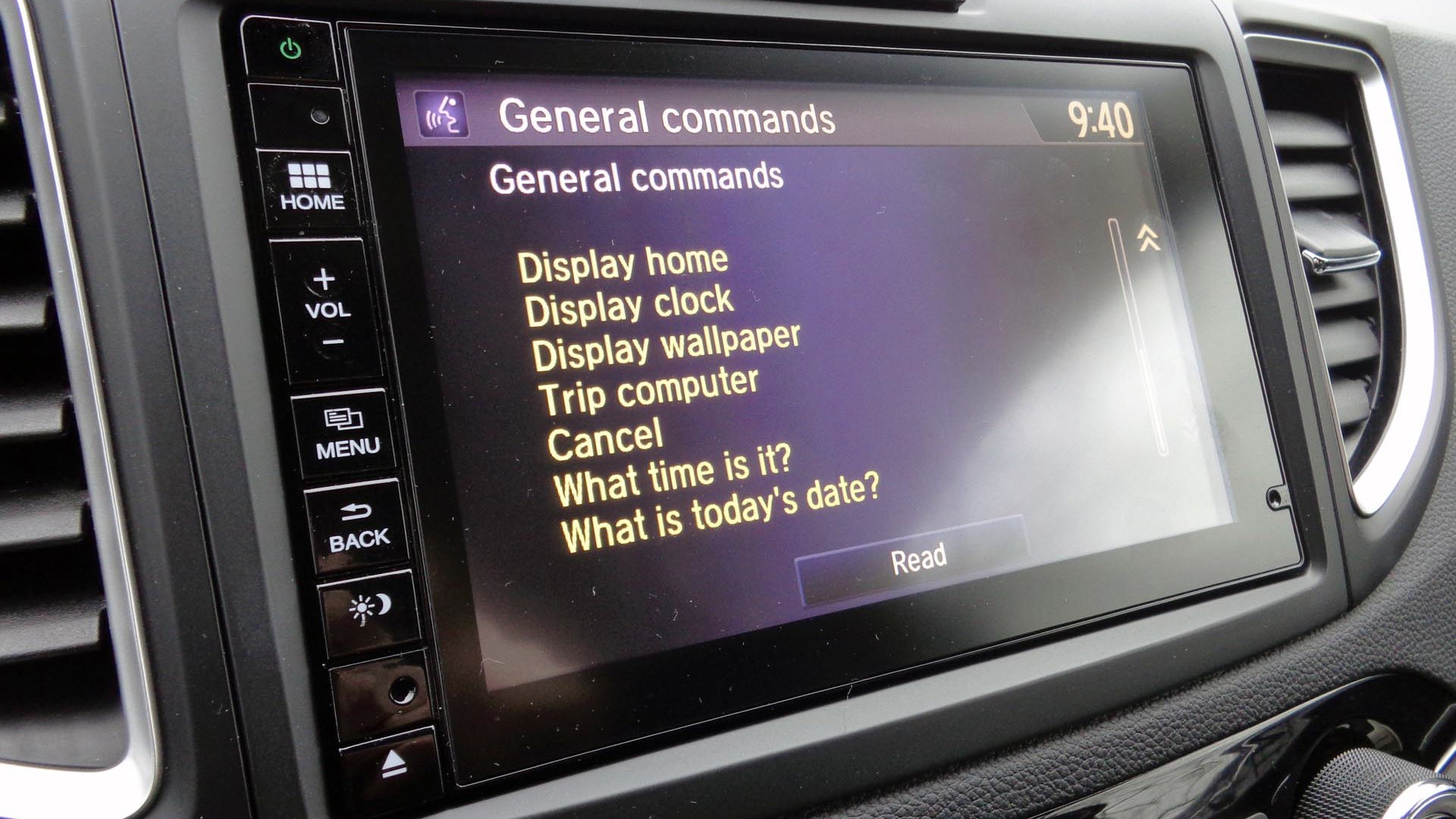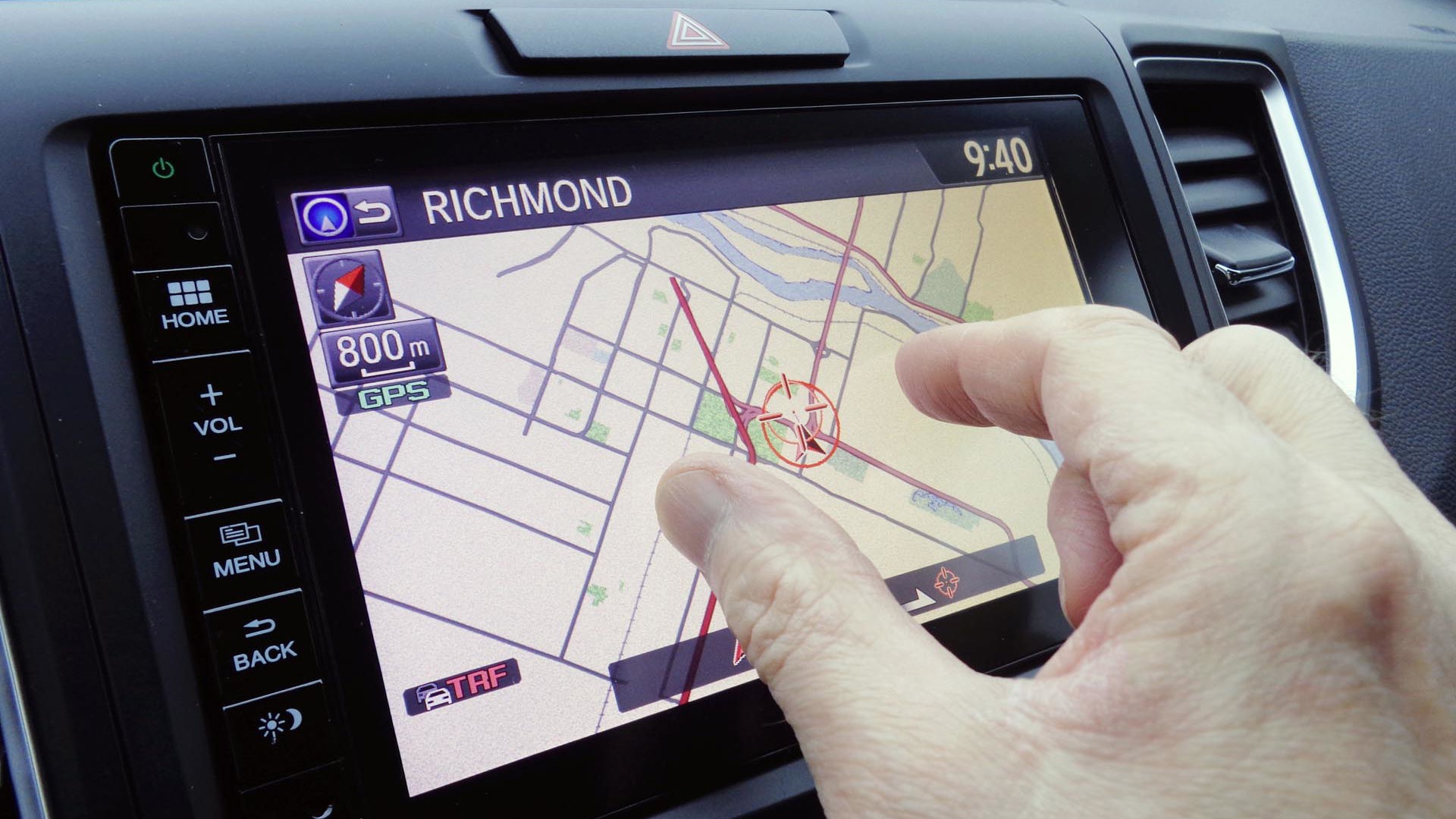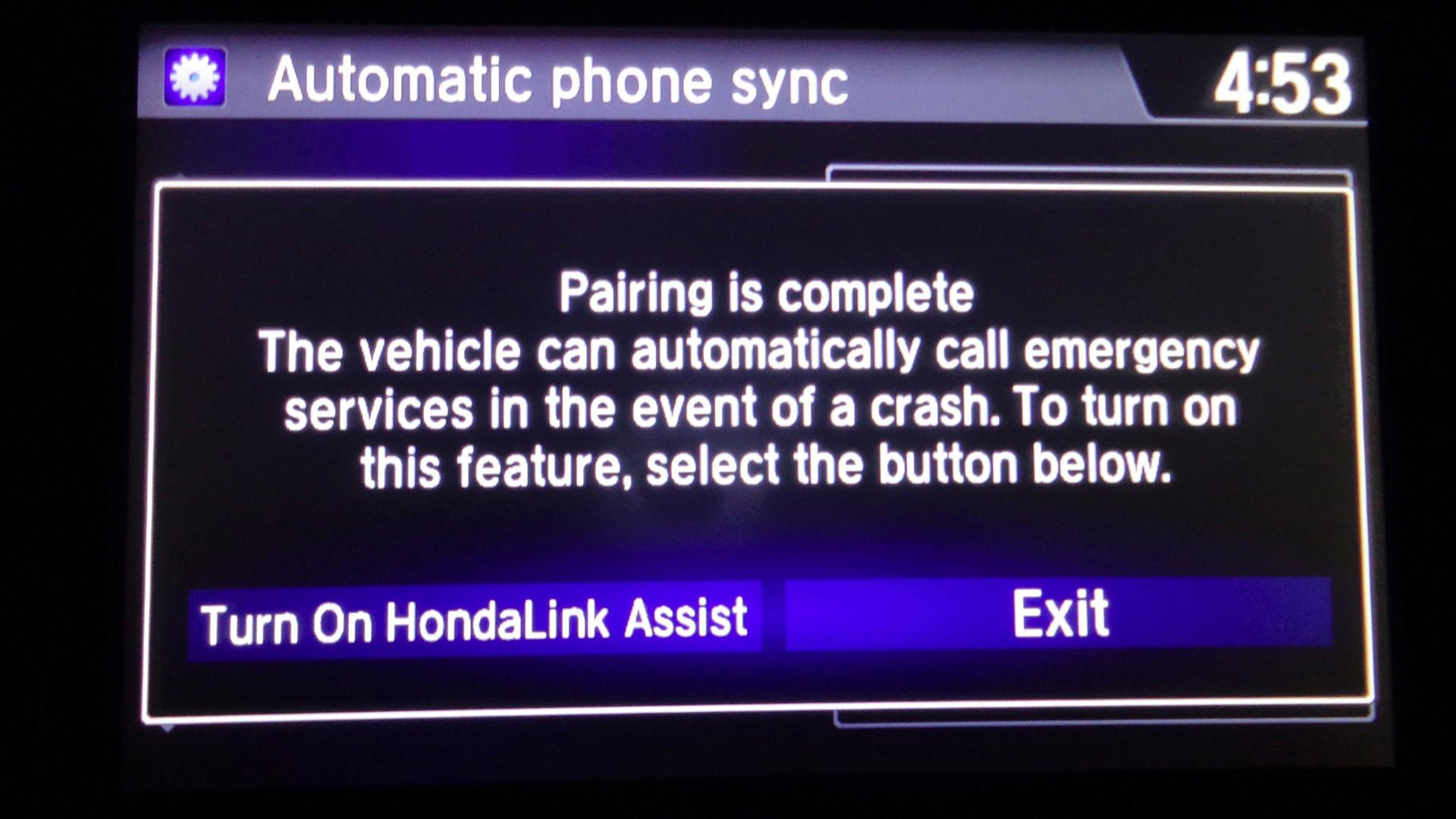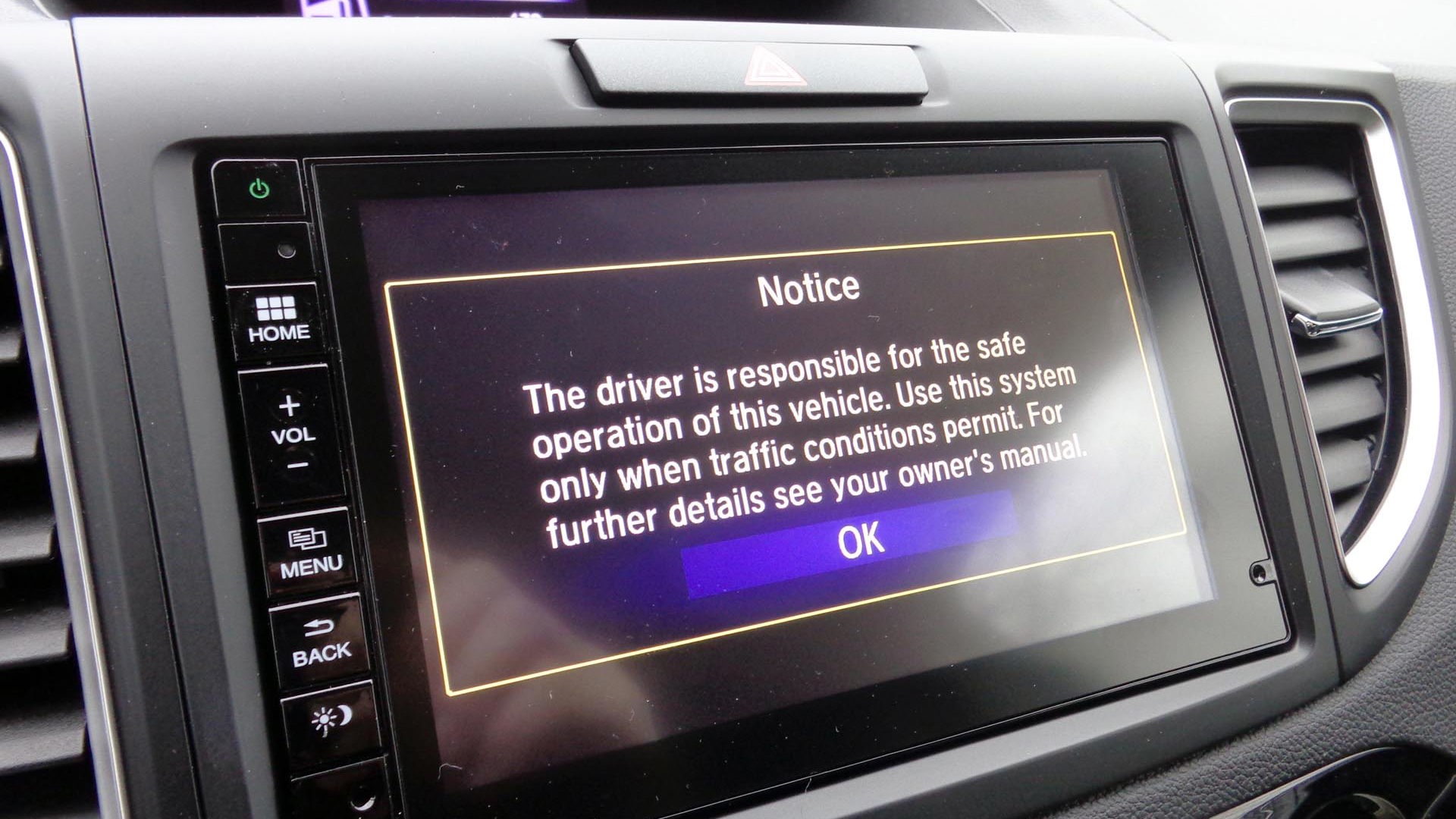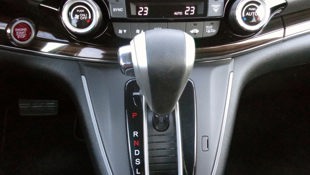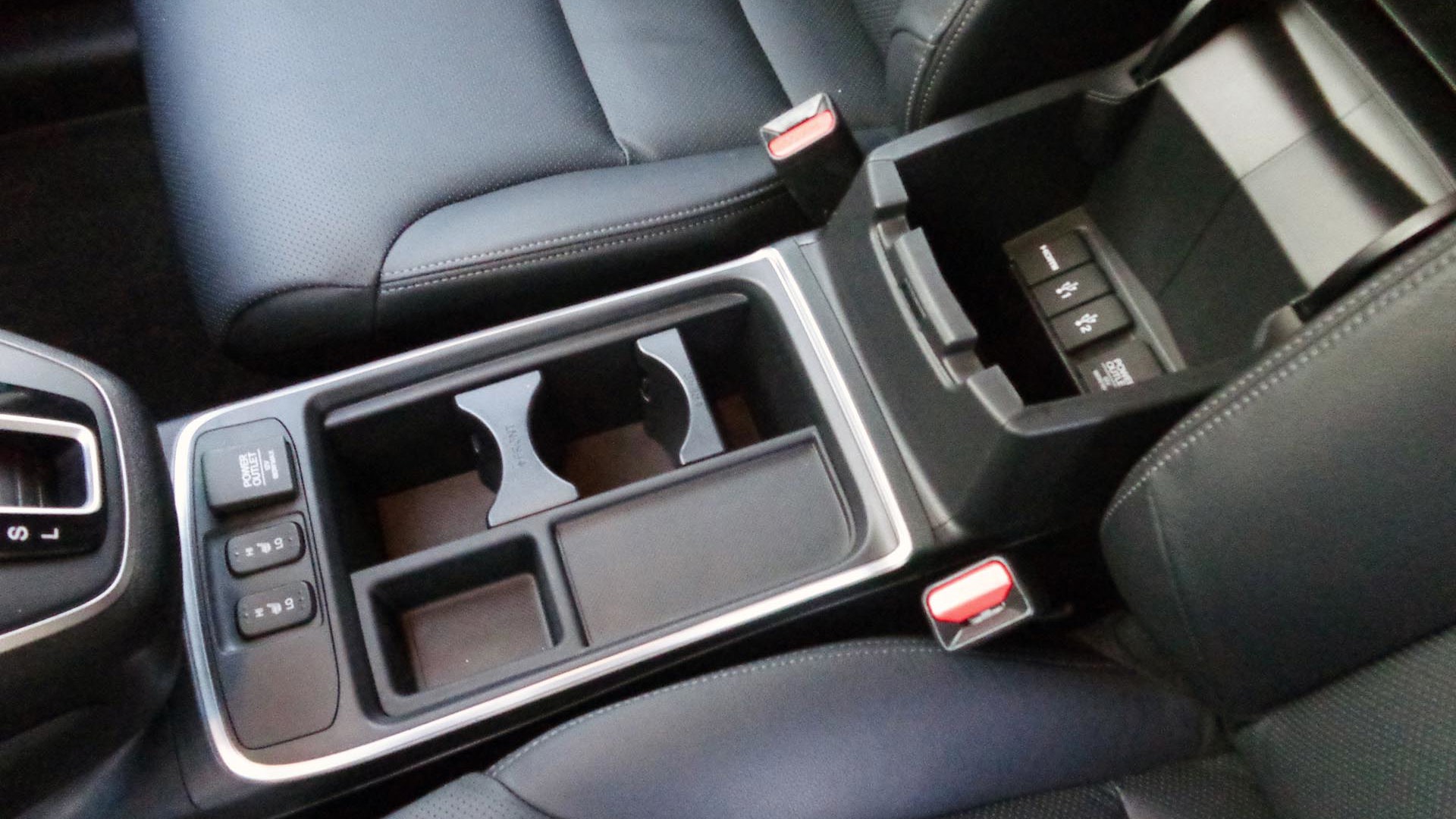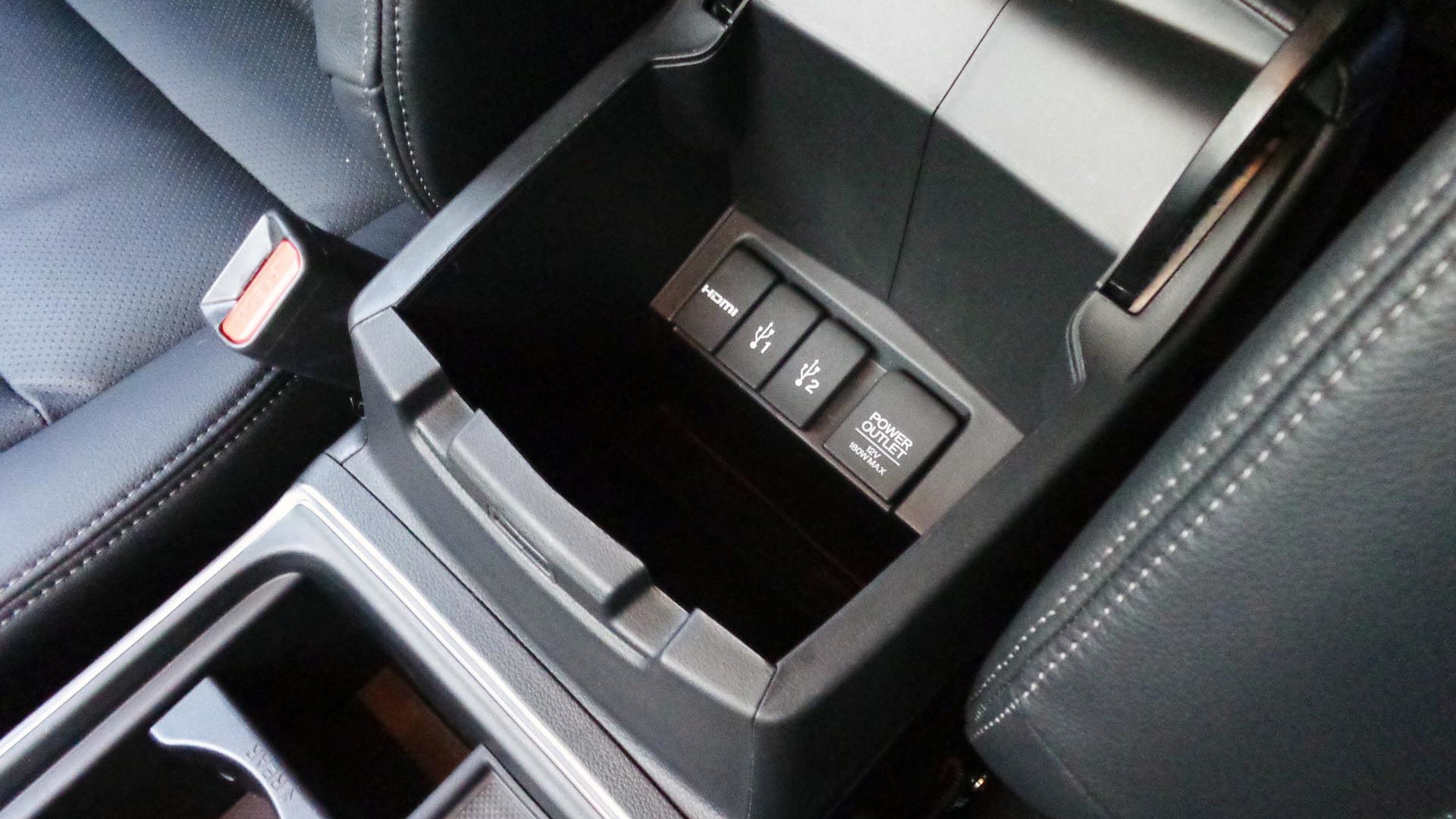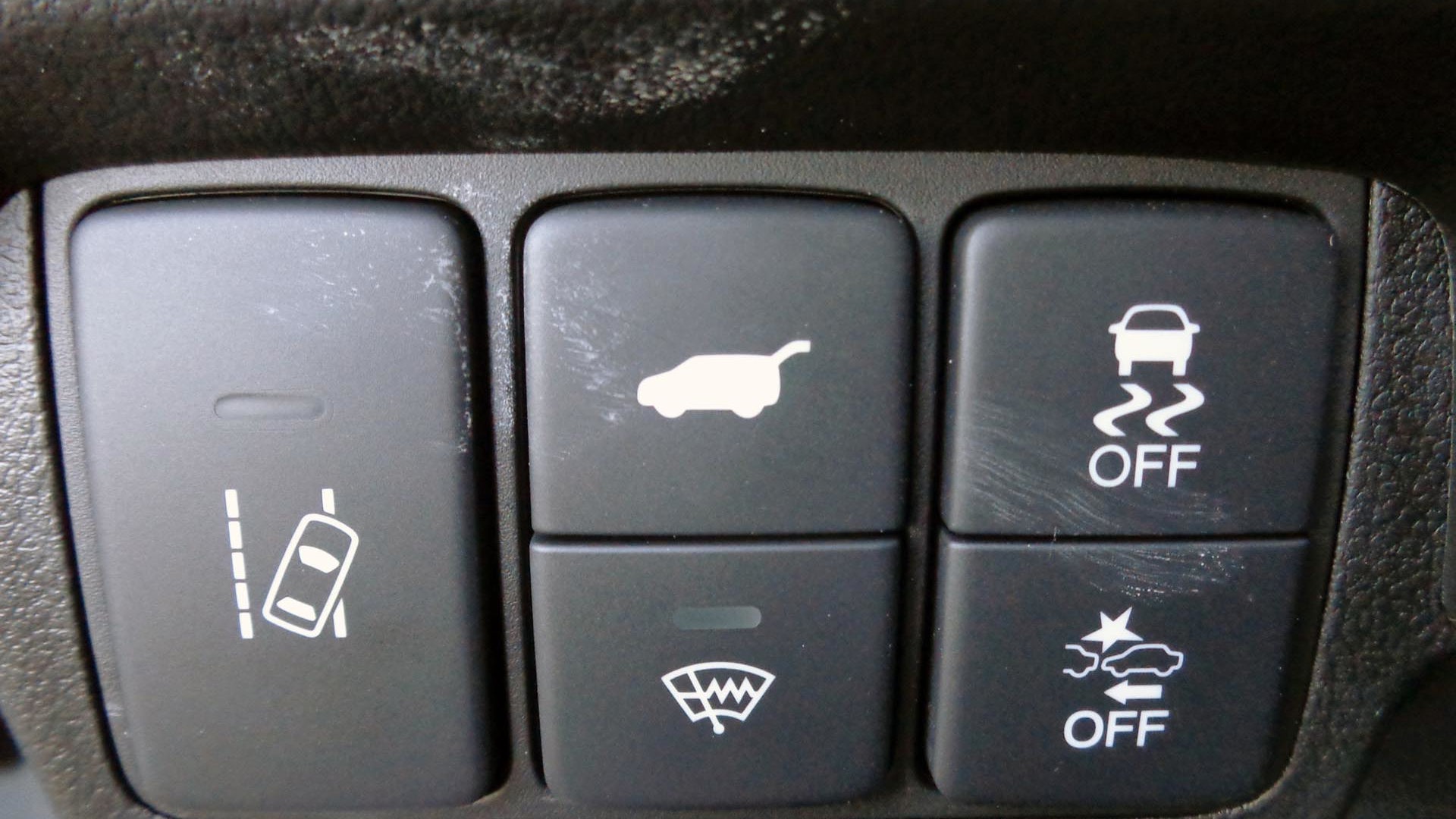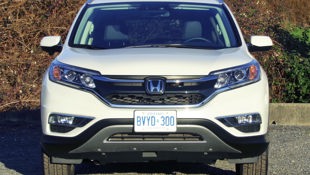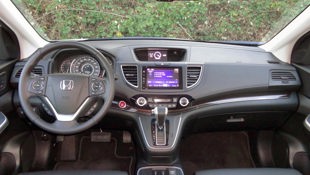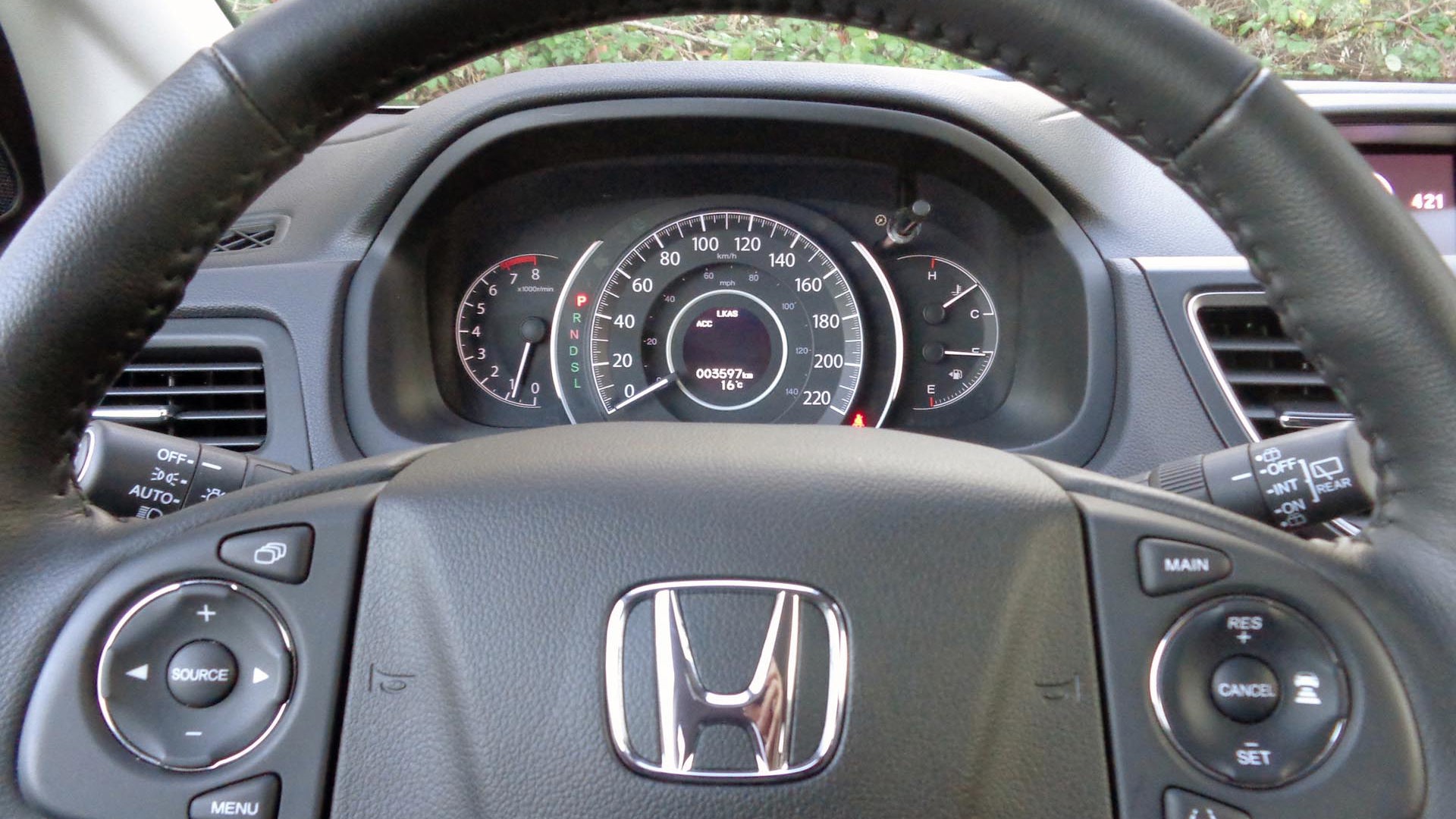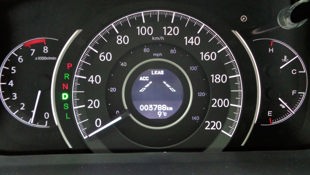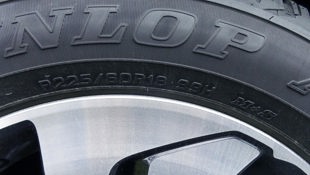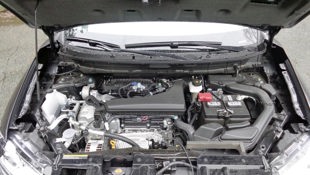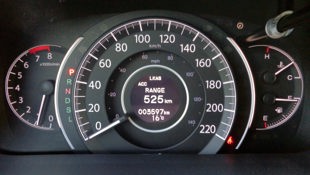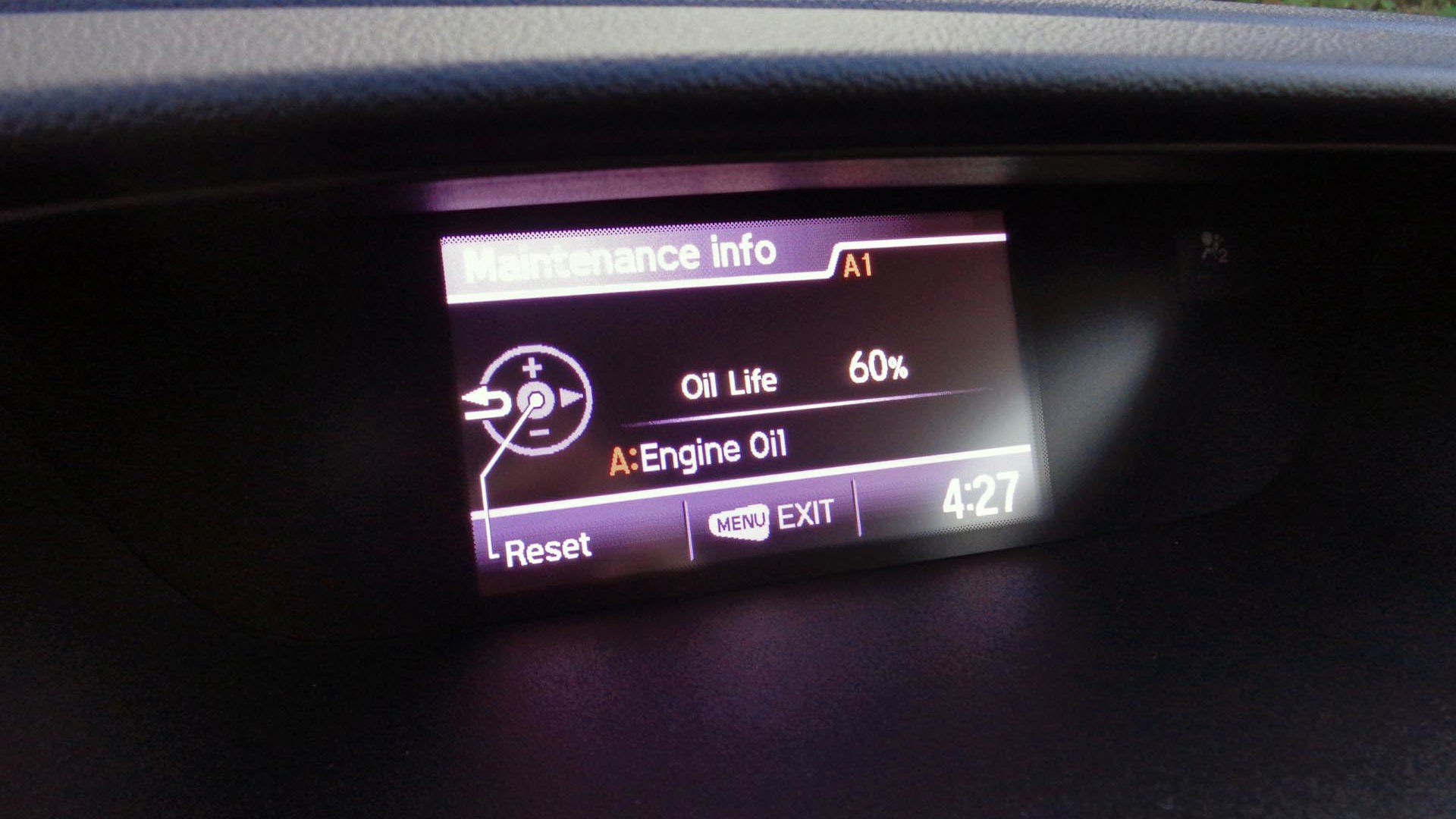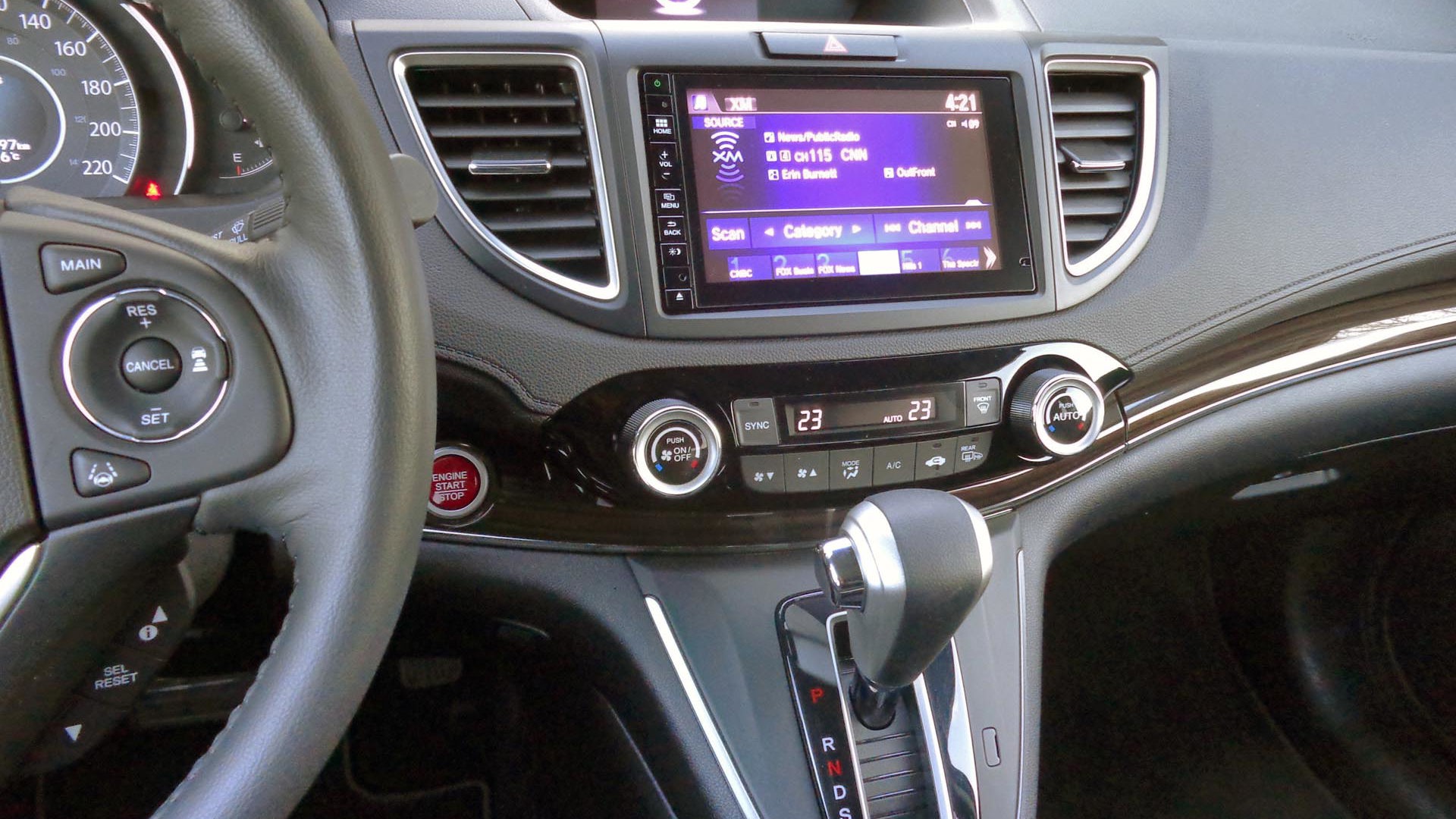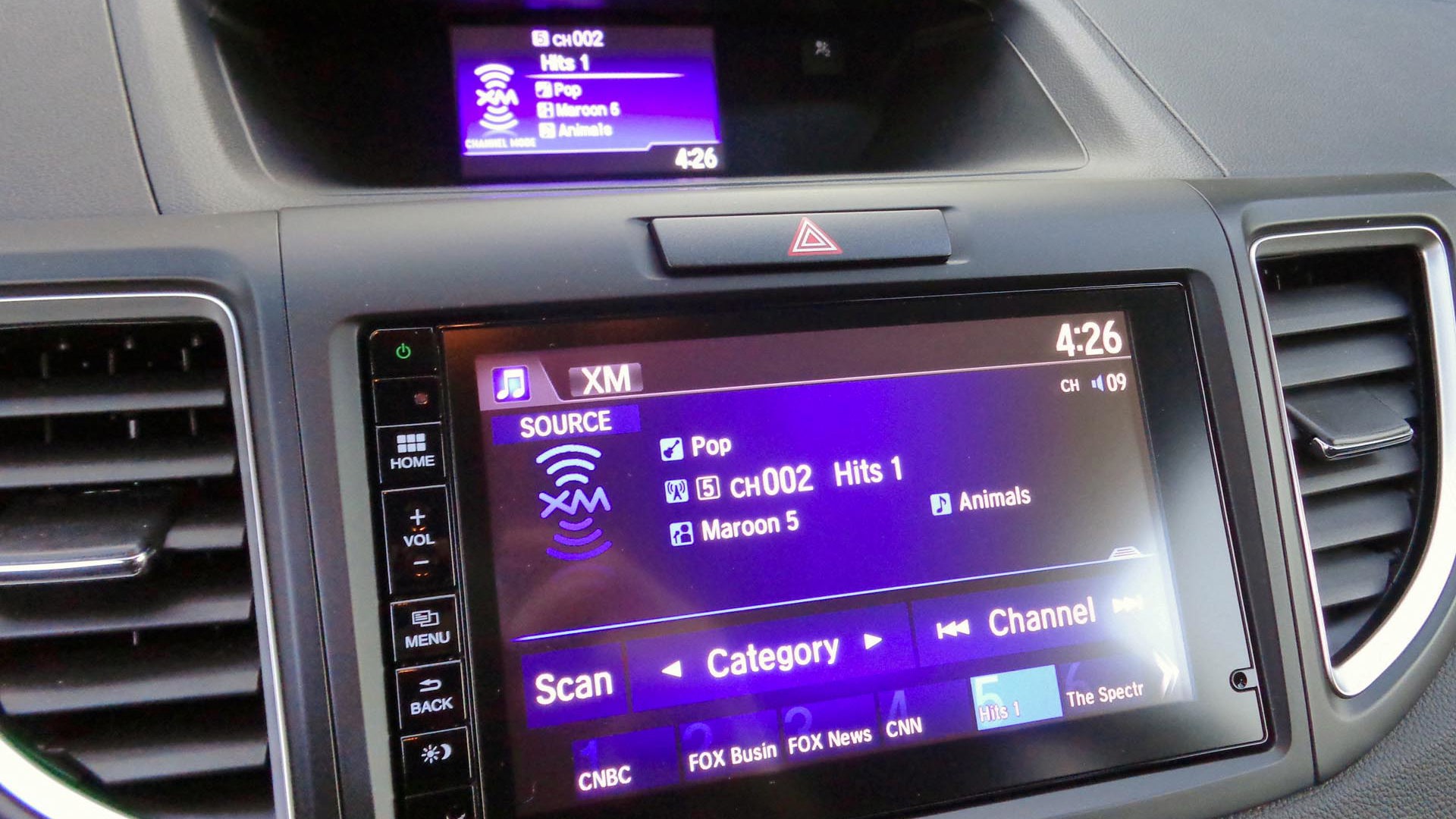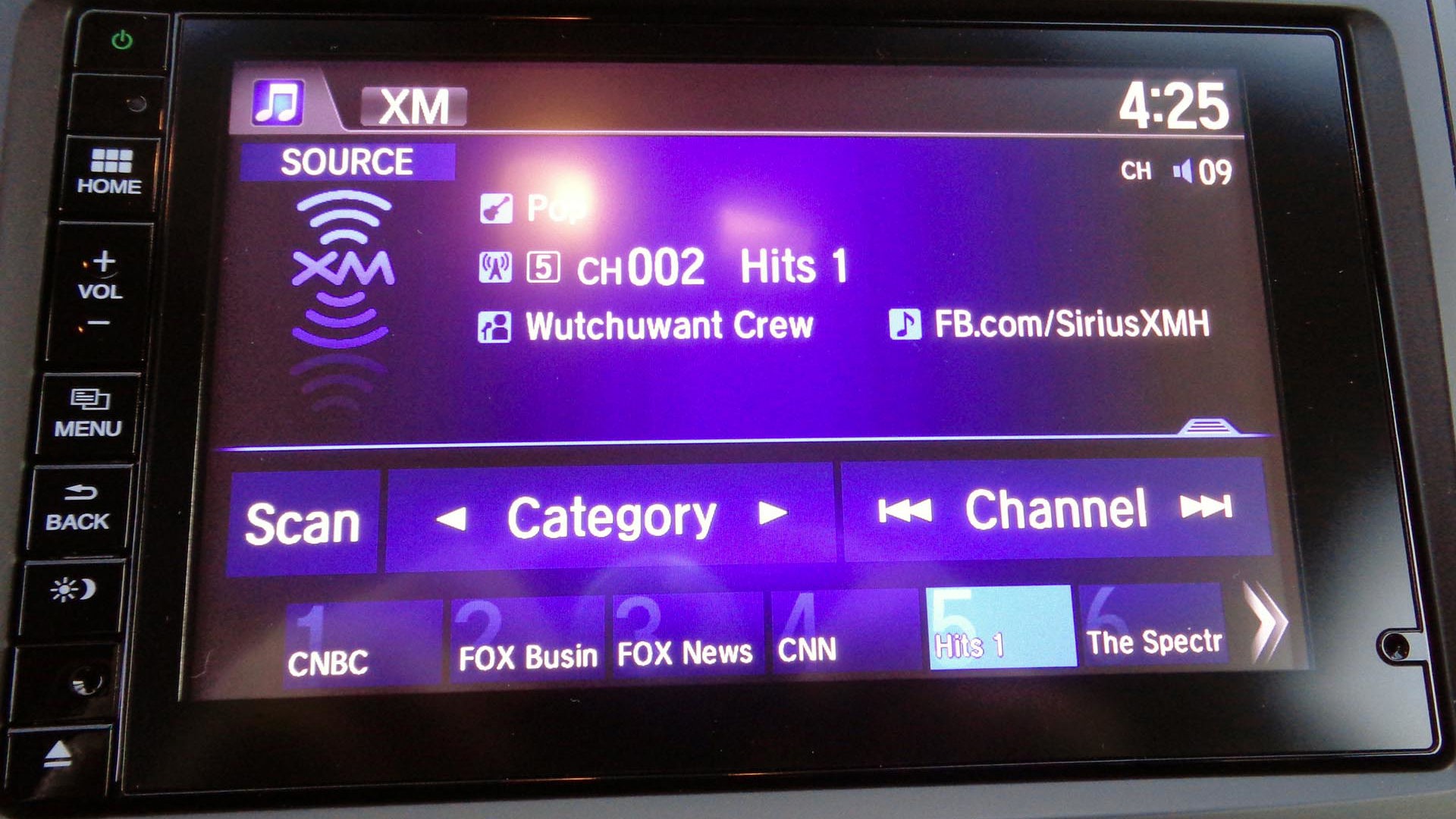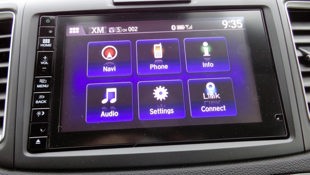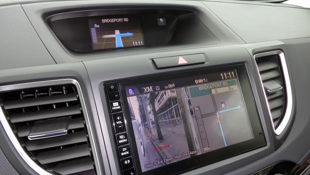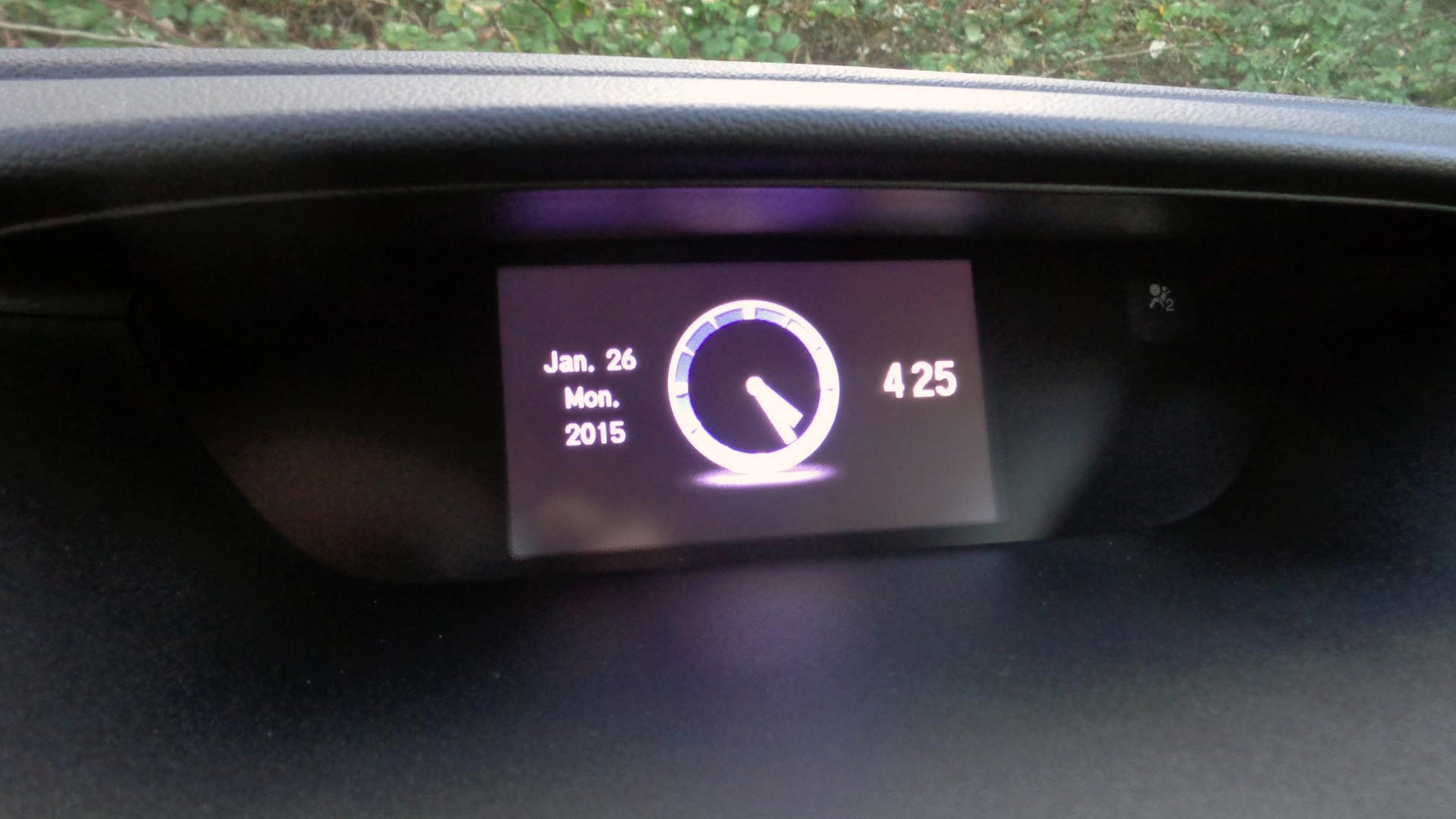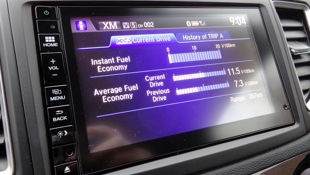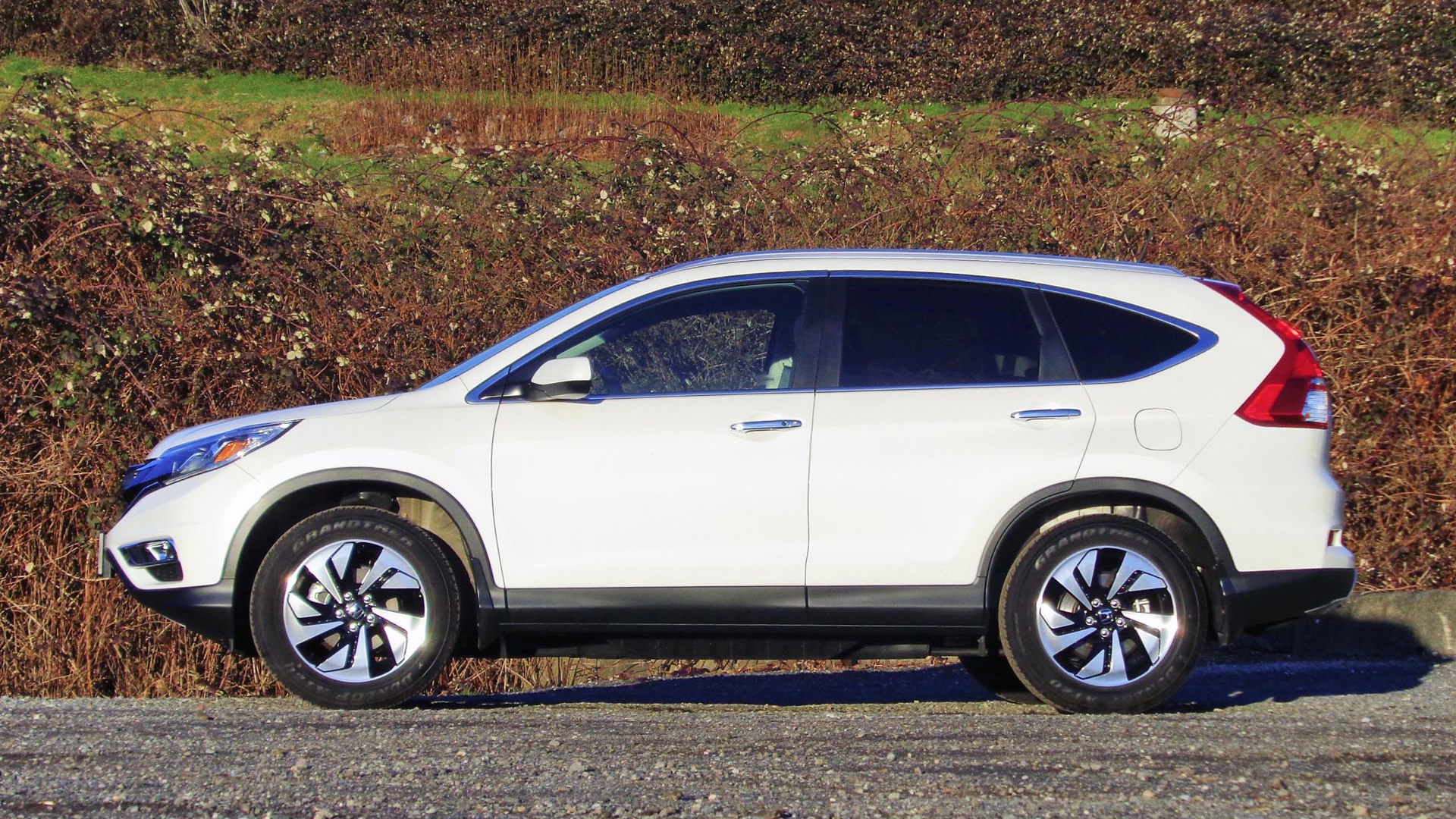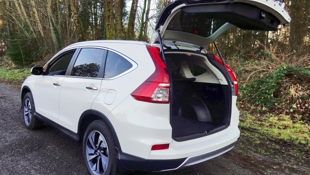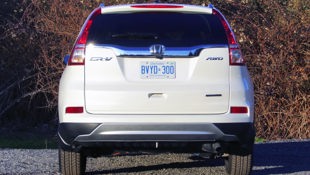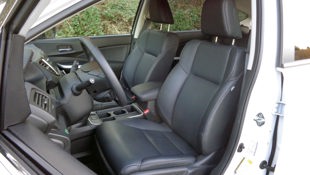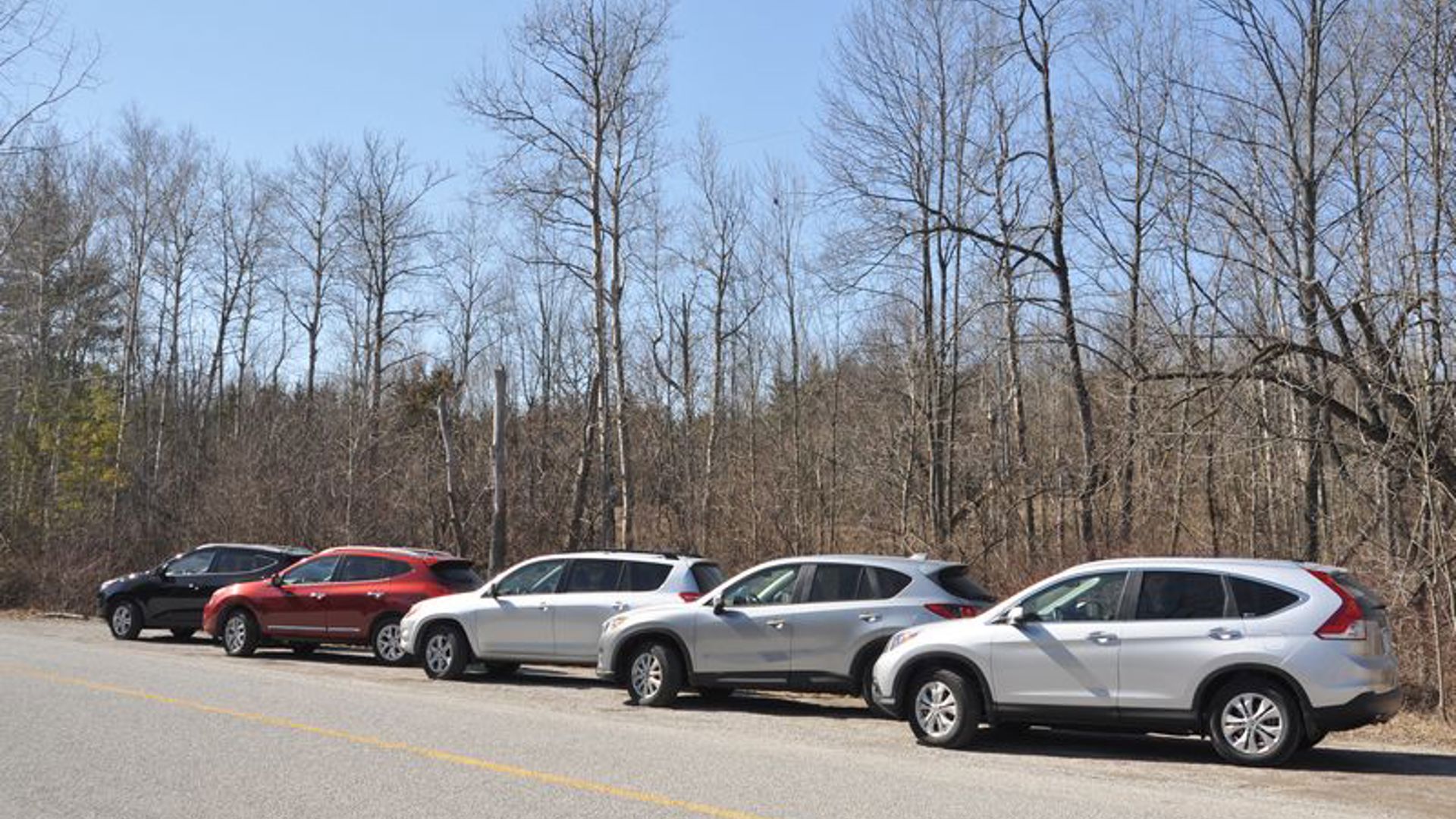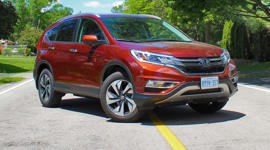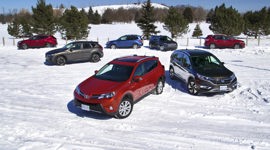 AutoTrader SCORE
AutoTrader SCORE
-
EXTERIOR STYLING7/10
-
INTERIOR8/10
-
PERFORMANCE8/10
-
COMFORT8/10
-
FUEL ECONOMY8/10
Honda calls it a “mid-cycle refresh” but there’s little that hasn’t been updated or upgraded on the 2015 Honda CR-V: the engine, transmission, suspension, body structure, interior design, infotainment system, safety features, styling, and pricing have all undergone significant changes – though many are not in plain view. In fact, with these engine and transmission changes, it might be a more significant update than the recent redesign.
Subtle styling differences give the 2015 CR-V a slightly more aggressive look. There’s a new grille, new headlight surrounds, new fog lights and brighter trim on the lower front bumper. Modified tail lights and new silver trim grace the rear view. Still, the CR-V’s basic size and shape haven’t changed much. The body is 27 mm longer but rides on the same 2,620 mm wheelbase as the previous model. The width is the same, but the track is slightly wider due to half-inch wider alloy wheels. Height remains the same for the FWD and AWD models.
With these engine and transmission changes, it might be a more significant update than the recent redesign.
Crash safety has been improved with increased torsional and bending stiffness and further structural improvements that help direct collision energy away from the passenger compartment. The Insurance Institute for Highway Safety gives the 2015 Honda CR-V its Top Safety Pick+ designation (which includes the IIHS’ new small-overlap frontal offset crash test); while the National Highway Traffic Safety Administration gave it a 4-star rating (out of 5) in its 35 mph frontal crash test and 5 stars in its side impact crash test.
Depending on the trim level, 2015 MSRPs have risen between $60 and $1,150, and a new SE AWD trim has been added between the base LX AWD and EX AWD trims. The former EX 2WD trim has been deleted altogether leaving the base LX 2WD as the only trim available with front-wheel drive. The base price of the 2015 Honda CR-V LX 2WD remains unchanged at $25,990 while the LX AWD is $28,350 (up $60); the new SE AWD is $29,890; the EX AWD is $31,890 (up $600); EX-L AWD $33,890 (up $400); and Touring AWD $35,790 (up $1,150).
The big price bump to the Touring trim level is largely owing to its new and exclusive ‘Honda Sensing’ group of active safety features designed to detect collisions and take evasive action if a collision or dangerous maneuver is detected. The 2015 CR-V Touring is the first Honda vehicle to feature Collision Mitigation Braking System and Lane Keeping Assist System and the first CR-V to add Adaptive Cruise Control, Forward Collision Warning, Lane Departure Warning, and the LaneWatch blind spot screen view.
Working in conjunction with Lane Departure Warning (LDW), which warns the driver if the CR-V crosses a lane without the turn signal being activated, Honda’s new Lane Keeping Assist System (LKAS) uses a camera on the top of the windshield to identify lane markings and automatically steer the CR-V to keep it in the centre of the lane at speeds between 72 km/h and 145 km/h. It’s a weird sensation when the car starts to steer itself and a bit frightening when it ceases steering automatically because the lane markings have disappeared. Still, the driver can override it any time, or just turn it off. LKAS also deactivates if the driver removes their hands from the steering wheel (or fails to provide steering inputs for a length of time). And in the absence of lane markings, the steering reverts to normal and the driver is responsible for steering.
The 2015 CR-V Touring trim also includes Advanced Cruise Control (ACC), which uses radar waves to automatically maintain a designated speed and distance between the CR-V and the vehicle ahead. This is best utilized in light traffic rather than bumper-to-bumper traffic. Working in conjunction with ACC is Forward Collision Warning (FCW), which uses radar waves and the camera on the windshield header to warn of a potential collision with vehicles and pedestrians ahead. The driver can adjust the distance at which alerts sound by choosing “Long” “Normal” or “Short”. Drivers can also turn off the FCW system entirely. If a collision is imminent, a warning sound and ‘Brake’ message appears in the instrument display.
FCW works with Collision Mitigation Braking System (CMBS), which automatically applies the brakes if a collision is imminent and the driver doesn’t brake or steer around the object. At city speeds, CMBS can bring the CR-V to a full stop before hitting anything, but at higher speeds CMBS can only lessen the impact. For those times when the driver is temporarily distracted and a pedestrian walks in front of the vehicle, CMBS could very well save a life. But it’s important to remember that ACC, LKAS, FCW and CMBS are not infallible: they may not detect or react to all objects ahead – particularly if it’s bad weather.
It’s easy to see how these active safety systems could be a first step in the development of self-driving cars but it also presents some troubling questions. For example, when the CR-V is steering itself or braking itself, does that lead to complacency and lack of attention on the part of the driver? Who is to blame if the vehicle hits the curb and causes an accident: the driver or Honda? I can see the lawyers getting involved here….
Personally, I like all of these safety systems except the LKAS and ACC. LKAS and ACC are not emergency avoidance systems: they actually take over normal steering, braking and throttle duties, tasks that the driver should be doing and concentrating on full-time. In my opinion, if the driver feels that the car is doing the driving for them, they might relax their concentration and be unprepared when the system suddenly deactivates. Even milliseconds of driver distraction can cause serious accidents. If you want someone else to do the steering, braking and accelerating, you should take the bus.
I do like Honda’s LaneWatch system, which shows a view of the area beside and behind the CR-V in the centre screen when the right turn signal is activated. Though this shouldn’t be viewed as a substitute for a shoulder-check, it can display a vehicle in the car’s blind spot that may not be seen by the driver during a shoulder-check. In fact, the CR-V does have a blind spot because of the rear pillars.
All 2015 CR-Vs, except the base LX 2WD trim, come with standard all-wheel drive that Honda calls Real-Time AWD. Completely automatic and electronically controlled using a variety of sensors, the AWD system runs in front-wheel drive most of the time to save fuel, but can transfer torque via a transfer case, propeller shaft, rear differential and multi-plate to the rear wheels in slippery situations, when starting out and when climbing hills. It works in conjunction with stability control to maximize traction and stability.
My week with the CR-V was spent in cold and rainy Vancouver where the CR-V plowed through large puddles and rain-soaked highways with no loss of traction thanks in part to its P225/60R18-inch Dunlop AT20 M+S all-season tires. Though it’s not really an off-road vehicle, the CR-V AWD does have a ground clearance of 170 mm while 2WD models have 160 mm.
Common to all 2015 CR-Vs is an improved 2.4-litre DOHC 16-valve i-VTEC four-cylinder powerplant which offers more torque, better fuel economy and fewer vibrations. New direct fuel injection, new cylinder design, and friction-reducing technologies are just a few of the upgrades that have boosted torque output by 11 percent to 181 lb-ft at 3,900 rpm (from 163 lb-ft at 4,400 rpm) while horsepower remains basically the same at 185 at 6,400 rpm (vs 185 at 7,000 rpm).
At the same time, overall fuel economy has improved by about 10 percent. EPA city/highway ratings for the 2015 CR-V 2WD model are now 8.7/6.9 vs 10.2/7.6 last year. CR-V AWD models show a similar improvement: 9.0/7.1 vs 10.7/7.8 city/hwy. NRCan fuel consumption (5-cycle) ratings are almost the same for 2015: 8.6/6.9 FWD and 9.1/7.2 AWD models. That puts the CR-V near the top of its class in fuel economy. Still, in our week with a CR-V AWD, we averaged over 9 L/100 km, about 1 L/100 km more than the combined EPA rating. We’ll blame it on our spirited driving style and Vancouver’s congested stop-and-go traffic.
Much of the credit for the 2015 CR-V’s improved fuel economy goes to its new continuously variable transmission (CVT), which replaces the five-speed automatic. With a gear ratio range that’s 33 percent wider than the five-speed automatic and 17 percent greater torque capacity, the CVT is designed to keep engine revs low without degrading performance. The combination of the engine’s increased torque and the CVT’s prompt response to throttle input provide a surprisingly linear acceleration feel under moderate acceleration. The engine won’t rev too high unless you really floor it, but even then the cabin is surprisingly quiet, thus minimizing the CVT-induced ‘droning’ effect. In general, the 2015 Honda CR-V’s CVT has less of the ‘slipping’ feeling common to many CVTs, and with its wider range of gear ratios, engine noise and vibrations are minimal at freeway speeds. During my week-long test, there were times when I forgot the transmission was a CVT.
At a steady 100 km/h on a level freeway, the engine turns over a paltry 1,600 rpm, no doubt contributing to the 2015 CR-V’s 9 percent improvement in highway fuel economy. More surprising is the 16 percent improvement in city fuel consumption, especially as the CR-V doesn’t have a stop/start feature that stops the engine automatically when paused at traffic lights or stop signs. The improvement in city fuel economy is likely due to the CVT’s ability to maintain low revs. However, we noticed that when the engine is idling, the idle speed is so low that the whole vehicle vibrates slightly – enough to feel it through the driver’s seat. I’m guessing this was a problem with my particular test vehicle and not a vehicle-wide phenomenon.
The new CVT also includes a driver-selectable Econ mode. This increases the throttle response time resulting in more leisurely acceleration and better fuel economy. Econ mode also allows slight variances in the set cruise control speed and reduces air conditioning output to save energy. In everyday commuting, we found that Econ mode provided sufficient performance to keep up with the rest of the traffic, while (theoretically) maximizing fuel economy. With Econ mode deactivated, the CR-V is effectively in a ‘sport’ mode, engine revs rising to provide more immediate throttle response but at the expense of more engine noise and worse fuel economy.
One difference between the CR-V and other compact SUVs is its sporty driving feel. Whereas many SUVs offer little driving excitement, the 2015 CR-V is quite enjoyable to drive. It feels tight and well controlled in the corners, steers with precision, has a firm, confident brake feel, and rides comfortably and quietly on the highway. For 2015, Touring models have larger 18-inch tires and both 17-inch and 18-inch alloy wheels are a half inch wider this year.
As well, the CR-V’s steering ratio was modified resulting in less than three turns lock-to-lock (previously 3.2). AWD models have a decent turning diameter of 11.2 metres. The CR-V’s advanced speed-sensitive steering can actually initiate corrective steering inputs when sensors detect instability in slippery road conditions. This is designed to encourage the driver to steer in the right direction rather than actually taking over the steering.
Interior design changes for 2015 are minimal: a bigger 7-inch touch-screen is now standard on all but the base LX trim, and all CR-Vs have a new centre console and a single fold-down centre armrest instead of one for each front seat. There are also sliding sunvisors to block out side glare, and a new rear ventilation outlets on the back of the centre console.
The new centre console has an open bin with moveable dividers for different cup sizes or larger items like computer tablets as well as a partitioned tray for odds and ends. Behind it is a padded armrest which slides fore and aft and lifts up for access to a small storage bin where there are USB, HDMI and 12-volt power outlets for connecting and charging smartphones. A cable pass-through allows phones to be placed in the open tray while connected to the hidden charging points. As versatile as this new console is, I preferred last year’s centre console because it had two cupholders with spring-loaded grippers, and a larger storage bin with a sliding cover for privacy.
The new 7-inch touch-screen in the centre dash has bright, easy-to-read graphics and iPad-like finger-touch features such as tap, pinch and swipe. Still, unlike other Honda touch-screens, it includes some traditional buttons on the left border for frequent tasks such as Menu, Home, Back, and Volume. The touch-screen can be used to access Audio, Phone, Navigation, Vehicle Information, Settings and Link Assist for emergencies. It requires a firm push to activate screen buttons and requires the driver to look away from the road momentarily. It is best used while the CR-V is stopped. Buttons on the steering wheel are a better choice when driving.
Specific voice commands can be used to operate the navigation and audio systems, but not the climate control. A list of these commands is available on the screen and can be read out loud by a tiny person hiding behind the screen.
In addition to wireless Bluetooth telephone and audio functions, Honda’s Hands-free Link system can accept texts and read them to the driver. Pre-set replies, such as “Talk to you later, I’m driving” can be sent by touching a button. The driver can also call back the sender. However, incoming text messages can only be displayed when the CR-V is in Park. Drivers with newer iPhones can also use Siri to send and receive e-mails, texts, get navigation instructions or check for weather and traffic updates.
Drivers with some smartphones can also access HondaLink apps by connecting their smartphone to the USB or HDMI interfaces in the centre storage bin. HondaLink offers four apps: a Connect app that allows location searches, weather reports, messaging and Honda service appointments; an Aha app that provides music content and Twitter and Facebook; a Navigation app that offers turn-by-turn navigation and traffic updates; and a Launcher app allows access to Honda approved third-party apps. For more detailed information on this, see Honda Canada's Hondalink page.
The centre touch-screen also serves as a rearview camera when in Reverse gear. It offers three driver-selectable views: 130-degree wide angle, 180-degree wide angle and top-down bumper view. The top-down view enables you to back up within inches of a rear obstacle, however unlike in some competitors, the CR-V doesn’t have a 360-degree top-down around-view camera.
The touch-screen also serves to show the right-side blind spot when signaling a right turn, and in conjunction with the smaller upper screen can display upcoming turns, directions and street names in a split screen format. I found this very useful when driving in unfamiliar territory.
One thing that irritated me about the touch-screen is the requirement to press the ‘OK’ button for the “Don’t forget to drive safely” warning each time the CR-V is started. If you don’t, the screen won’t work while you’re driving.
The smaller upper screen can display the day, date and a round clock, current radio station, average and current fuel economy readings, navigation instructions, and maintenance information. This screen’s purpose, as far as I can see, is to allow the driver to view two important functions at the same time. For example, the driver can see and adjust the radio station on the upper screen while viewing navigation instructions on the lower screen.
In addition to these screens, there is a smaller information screen/trip computer in the centre of the large central speedometer in the instrument cluster. Controlled by button on the lower steering wheel hub, this display can show fuel economy information and trip information, but its main purpose is to show when the driver-assist systems such as LKAS, CMBS, LDW are active and to display warnings.
The 2015 CR-V’s roomy cabin has a low step-in height and four large doors that open wide. I particularly like how the door bottoms cover the lower side sills thereby keeping them clean and less likely to soil your clothing when stepping out of the vehicle.
The cabin continues to provide generous legroom and headroom for four or five occupants however I found the rear seat cushion a bit low. The front seats are wide and comfortable and top trims have 10-way power driver’s seat including power lumbar. New door seals and sound-absorbing materials in combination with increased body rigidity have made the cabin even quieter than last year’s.
Base CR-V LX trims come with a 160-watt audio system with 4 speakers while SE and EX trims add two more speakers. EX-L and Touring trims upgrade to a rorty 328-watt premium sound system with 7 speakers including a subwoofer.
The CR-V’s split rear folding seats fold down in a two-step process: the rear seat cushions flip up against the front seatbacks and the rear seatback folds down onto the floor. It’s easy to do in one motion just by pulling on levers for each side in the cargo area or straps on the sides of the seat cushions. Putting the seats back up is a little more difficult: it requires pulling down the seat cushions on each side and lifting up the seatbacks for each side.
The CR-V’s roomy cargo area measures 1,054 litres with the rear seats up and 2,007 litres with the rear seats folded down. The cargo floor and rear seatbacks are lined but the rear wheelwells are not, and are susceptible to damage from sliding cargo.
One of the best things about the CR-V’s cargo area is the low loading height and large cargo opening, but as a result the rear liftgate is quite large and a bit heavy to pull up. Fortunately, it has gas struts that do most of the work. Touring trim models include a power-operated liftgate.
As an all-around family vehicle, the 2015 Honda CR-V is a good bet: it offers decent performance and fuel economy, all-weather capability, the latest telematics and communications systems, a roomy cabin and cargo area, a full suite of passive and active safety features, and a good record for reliability.
2015 Honda CR-Vs are assembled in Alliston, Ontario and East Liberty, Ohio.
| Warranty: 3 years/60,000 km; 5 years/100,000 km powertrain; 5 years/unlimited distance corrosion perforation; 3 years/unlimited distance 24-hour roadside assistance Competitors: |
| Model Tested | 2015 Honda CR-V Touring |
|---|---|
| Base Price | $36,540 |
| A/C Tax | |
| Destination Fee | $1,795 |
| Price as Tested | $38,435 |
|
Optional Equipment
None
|
|
